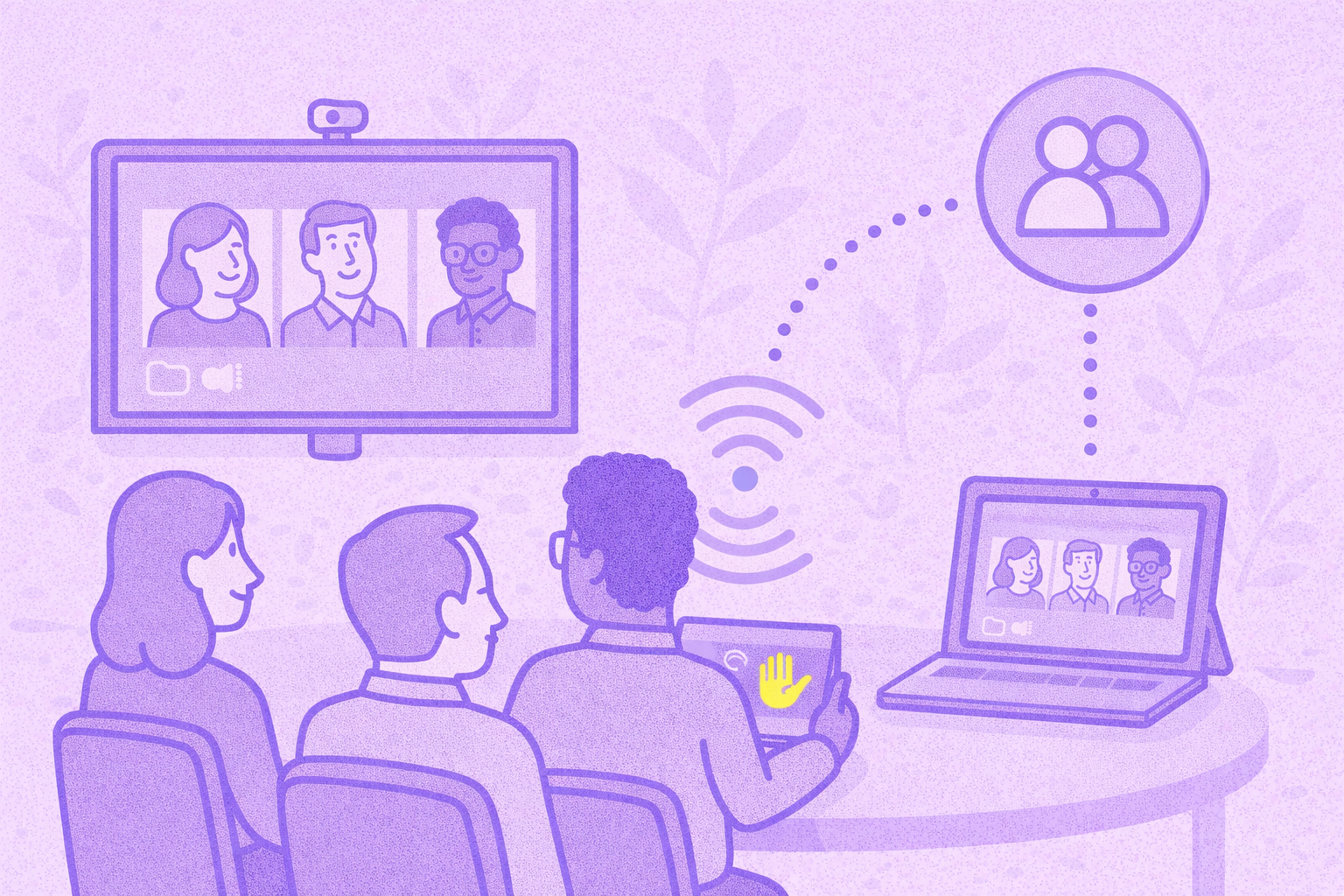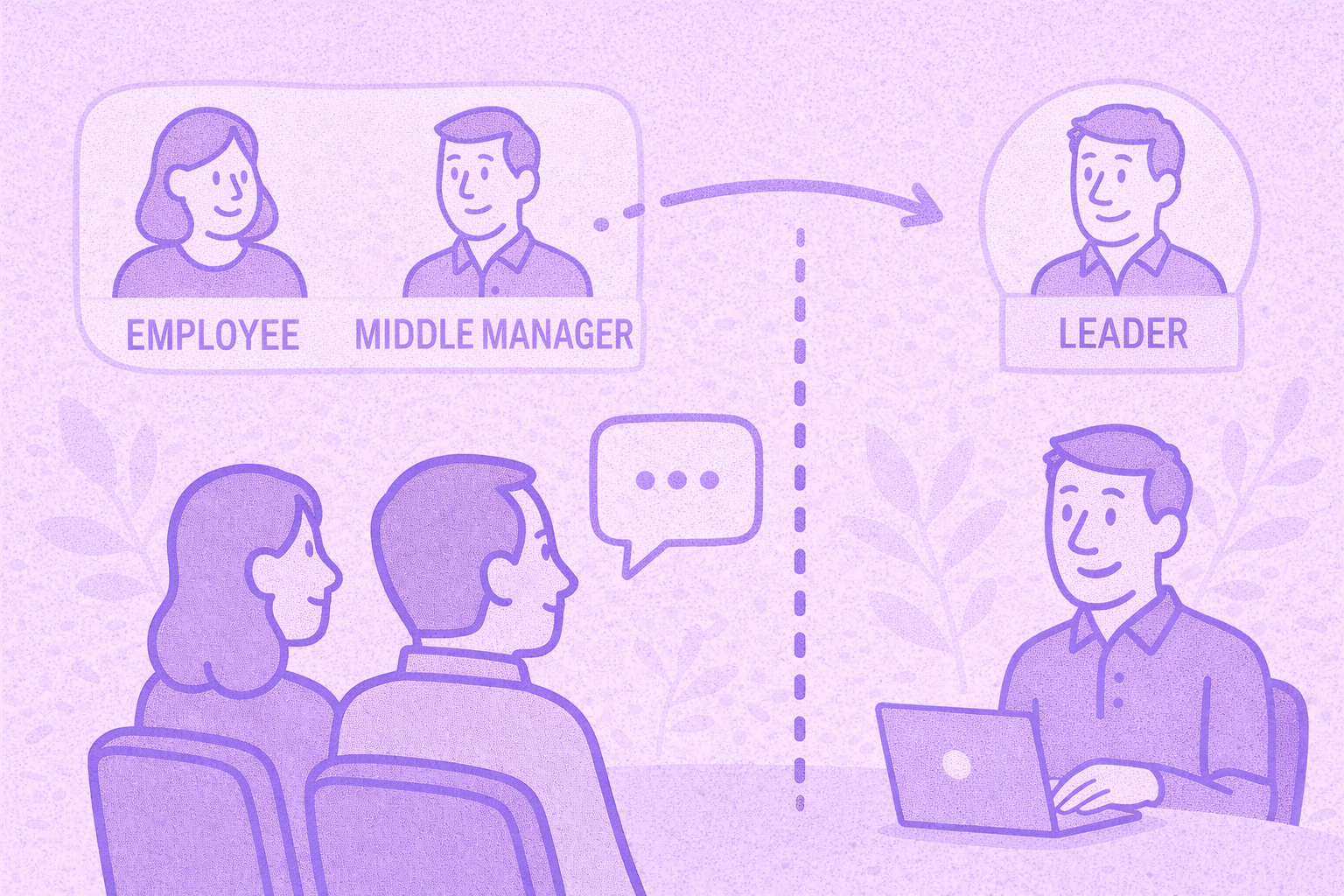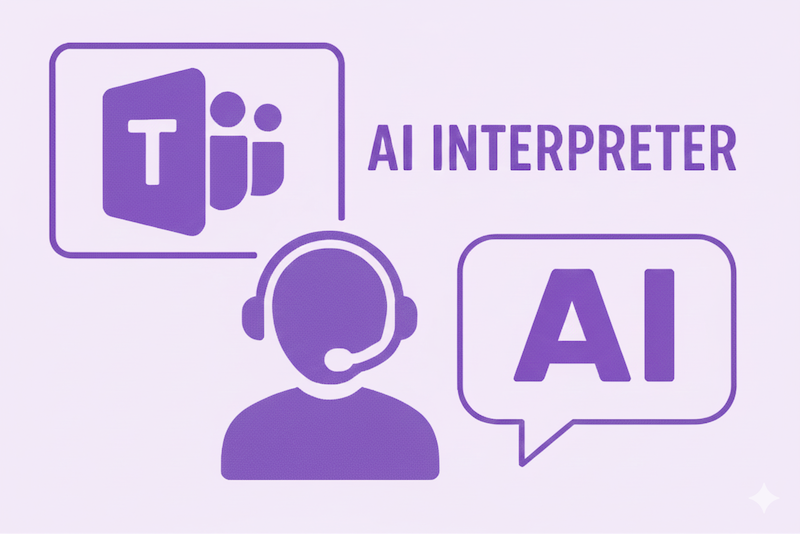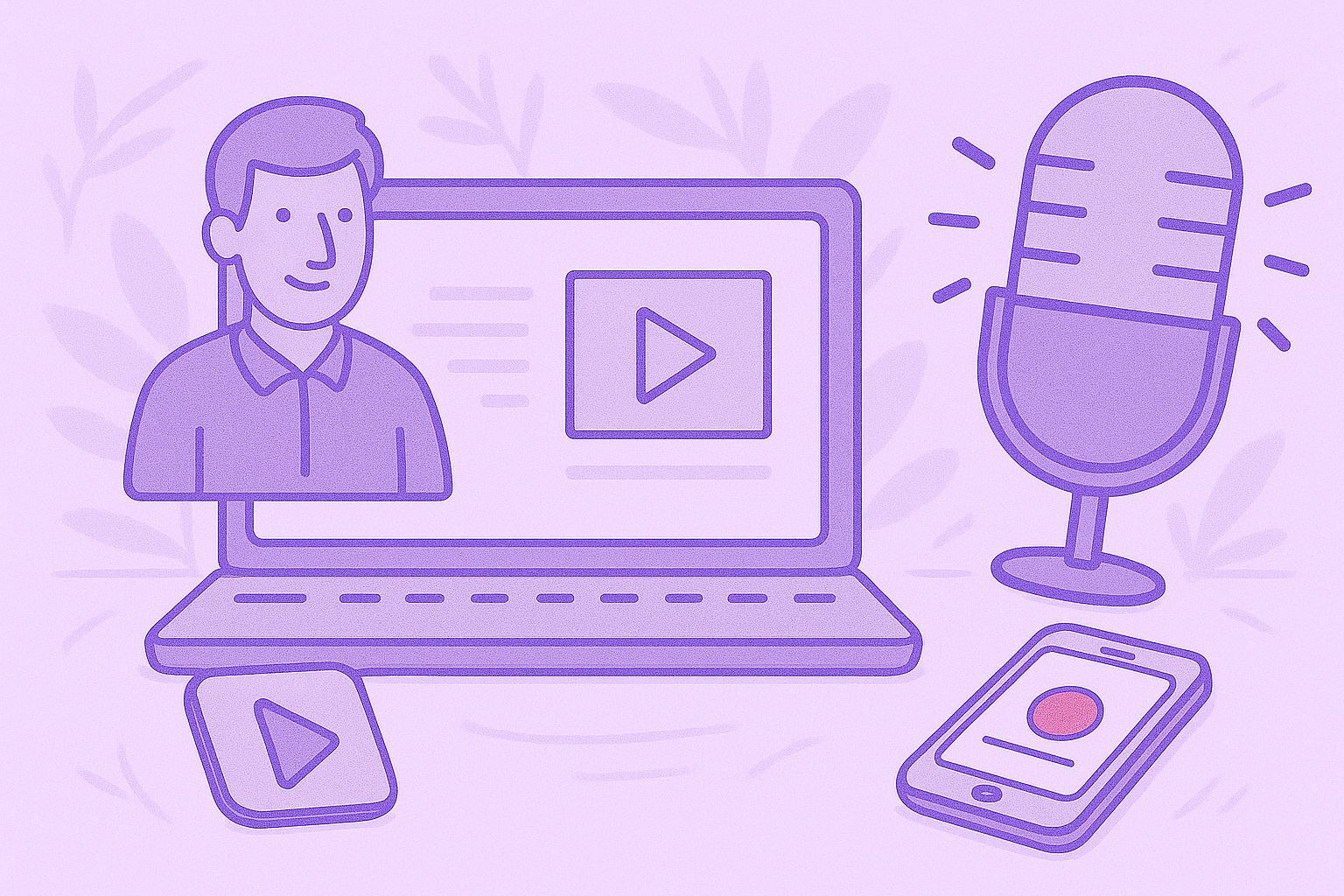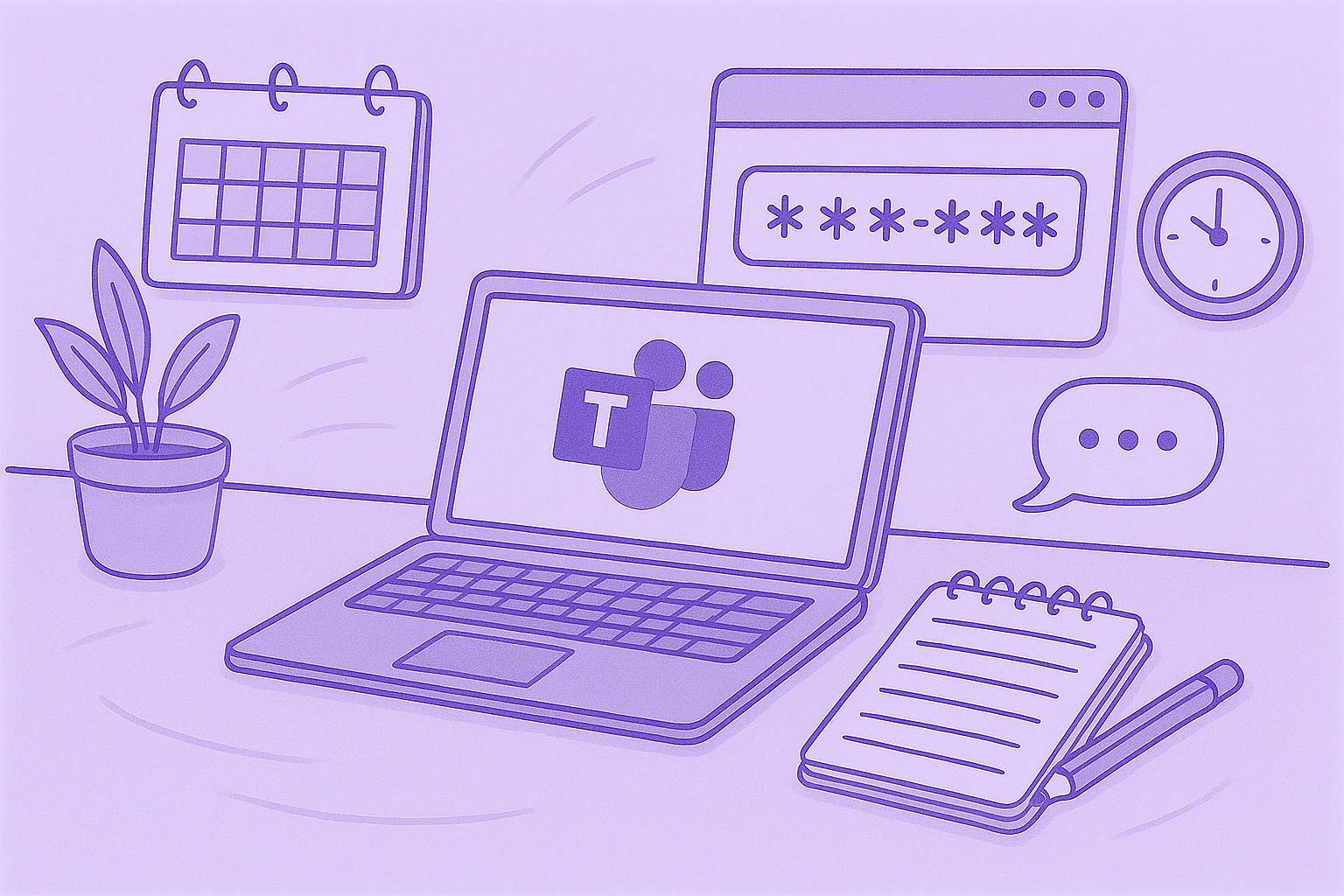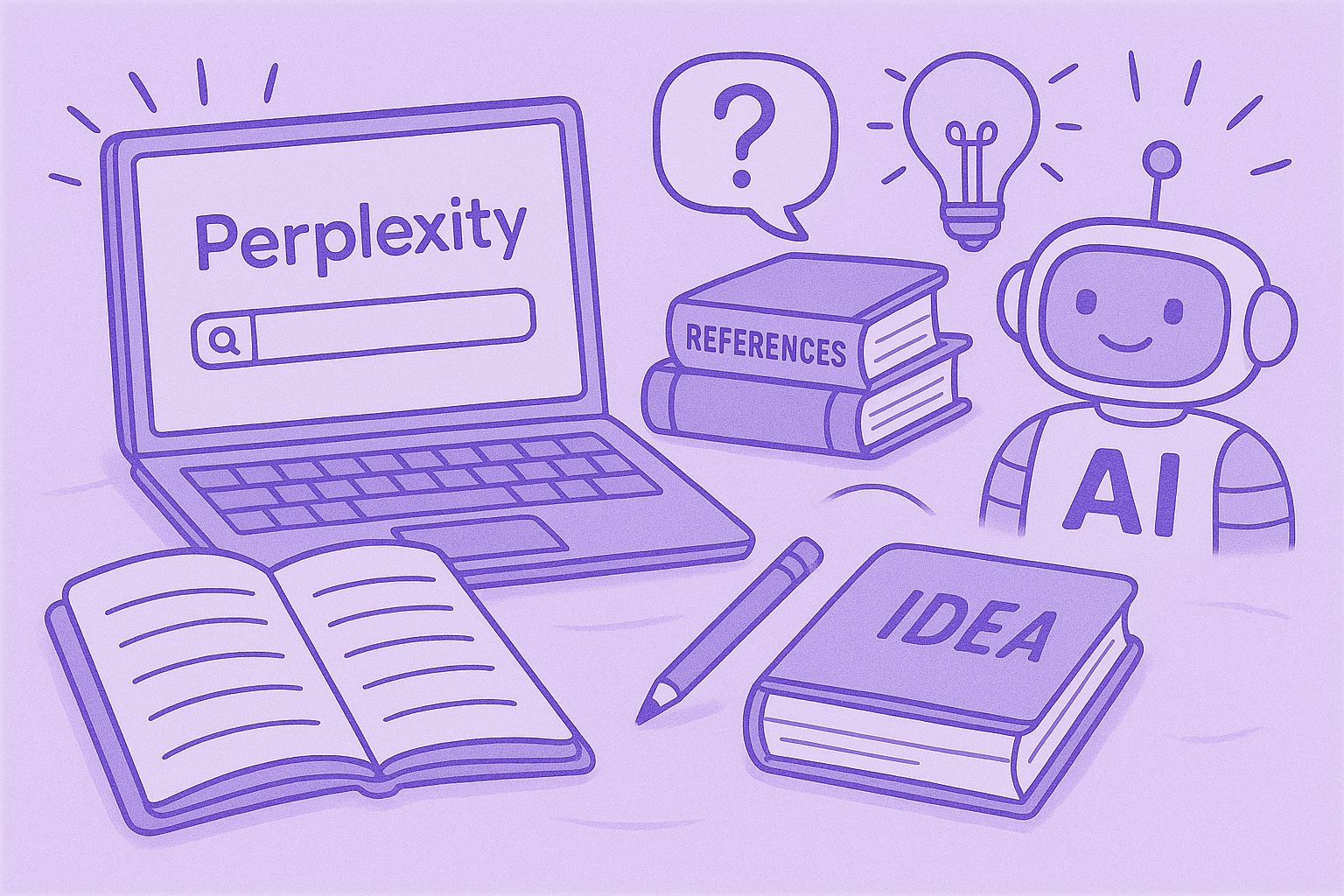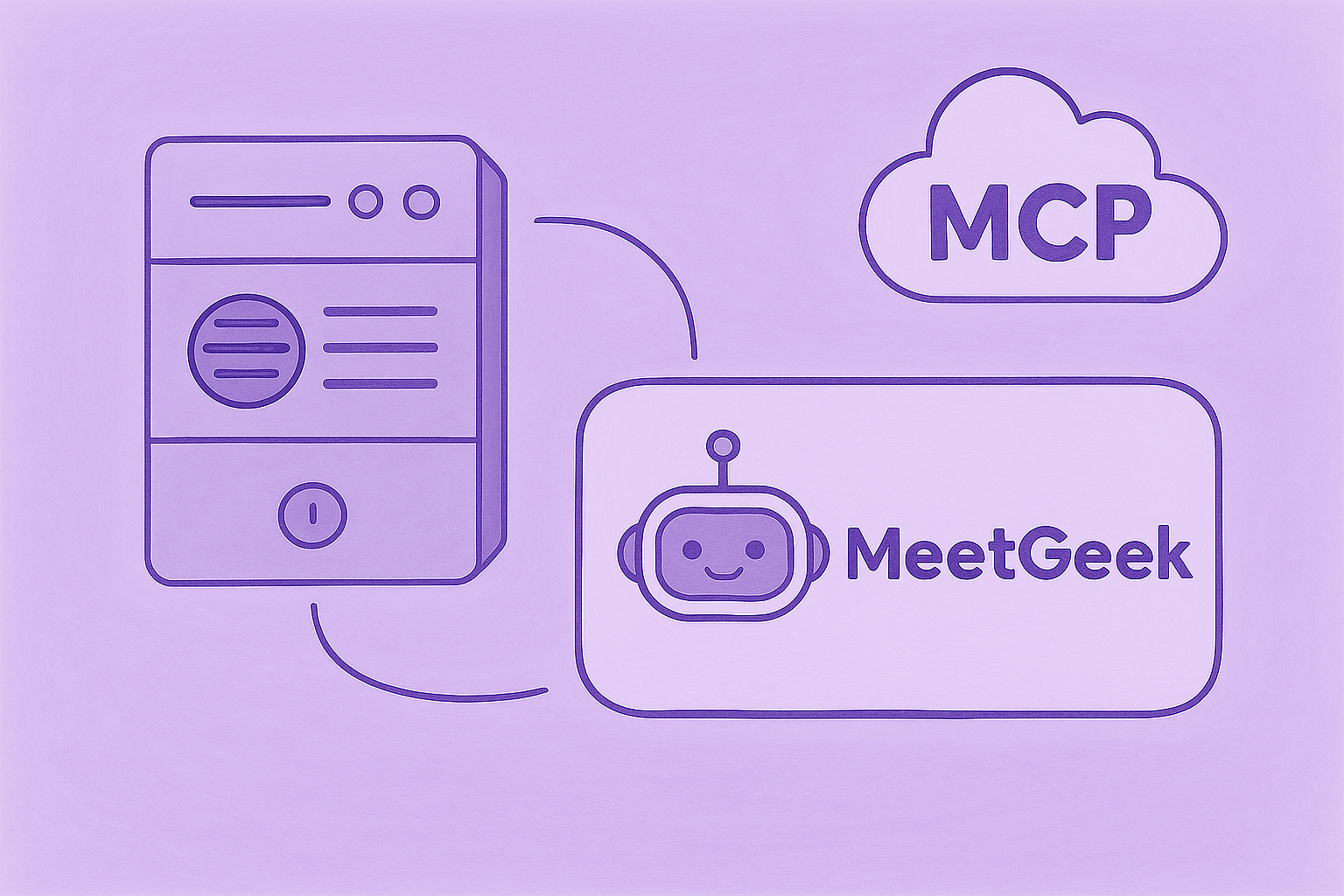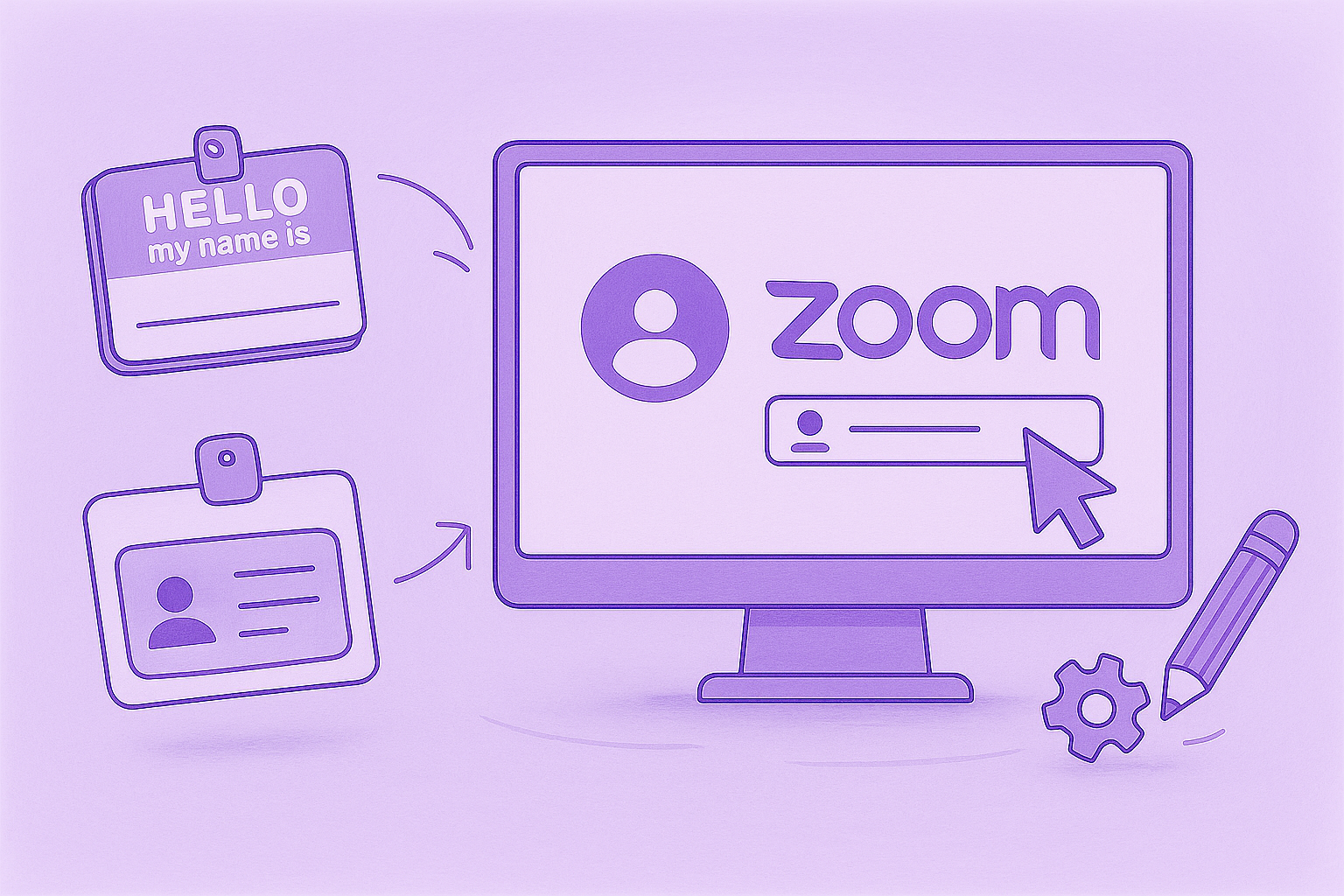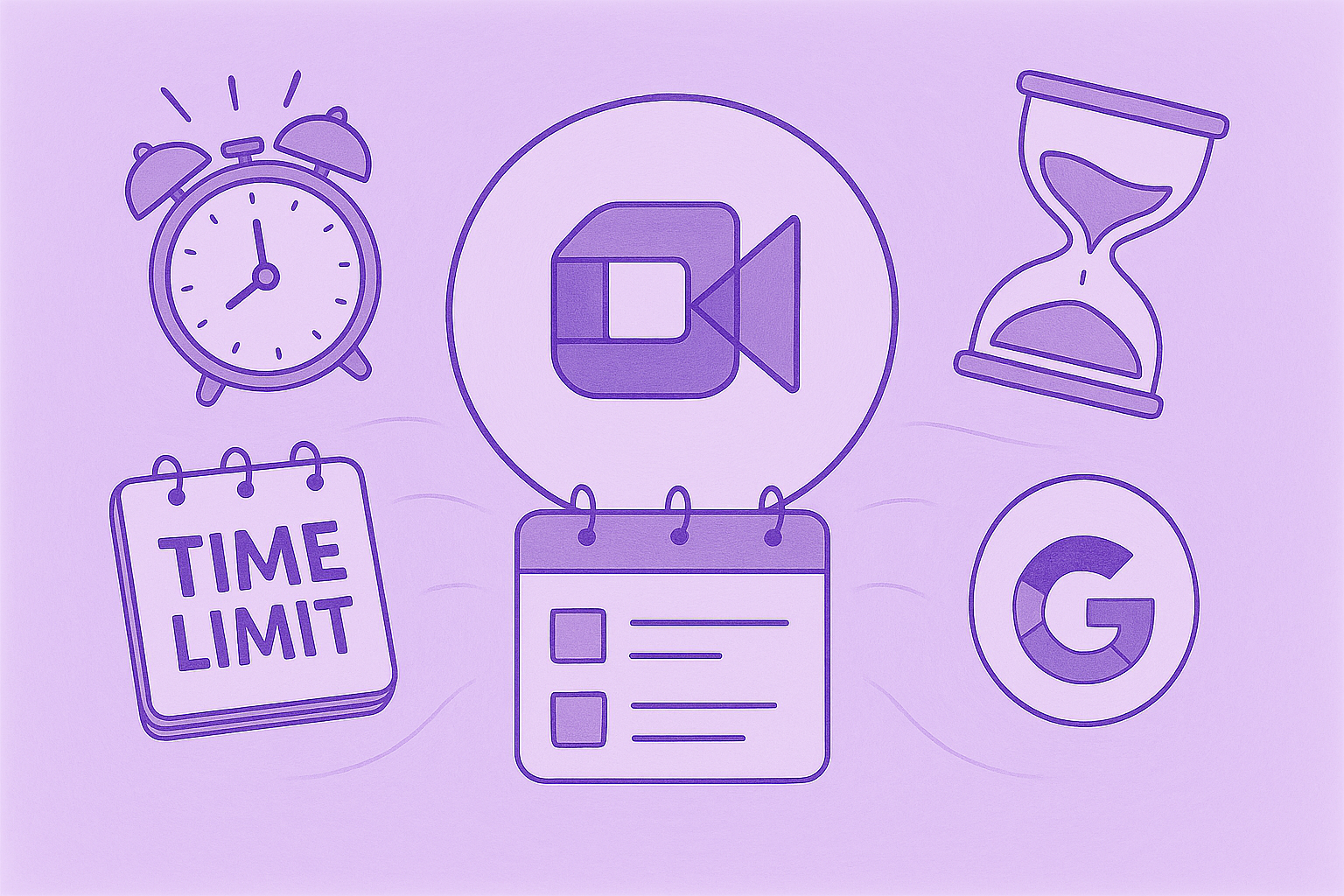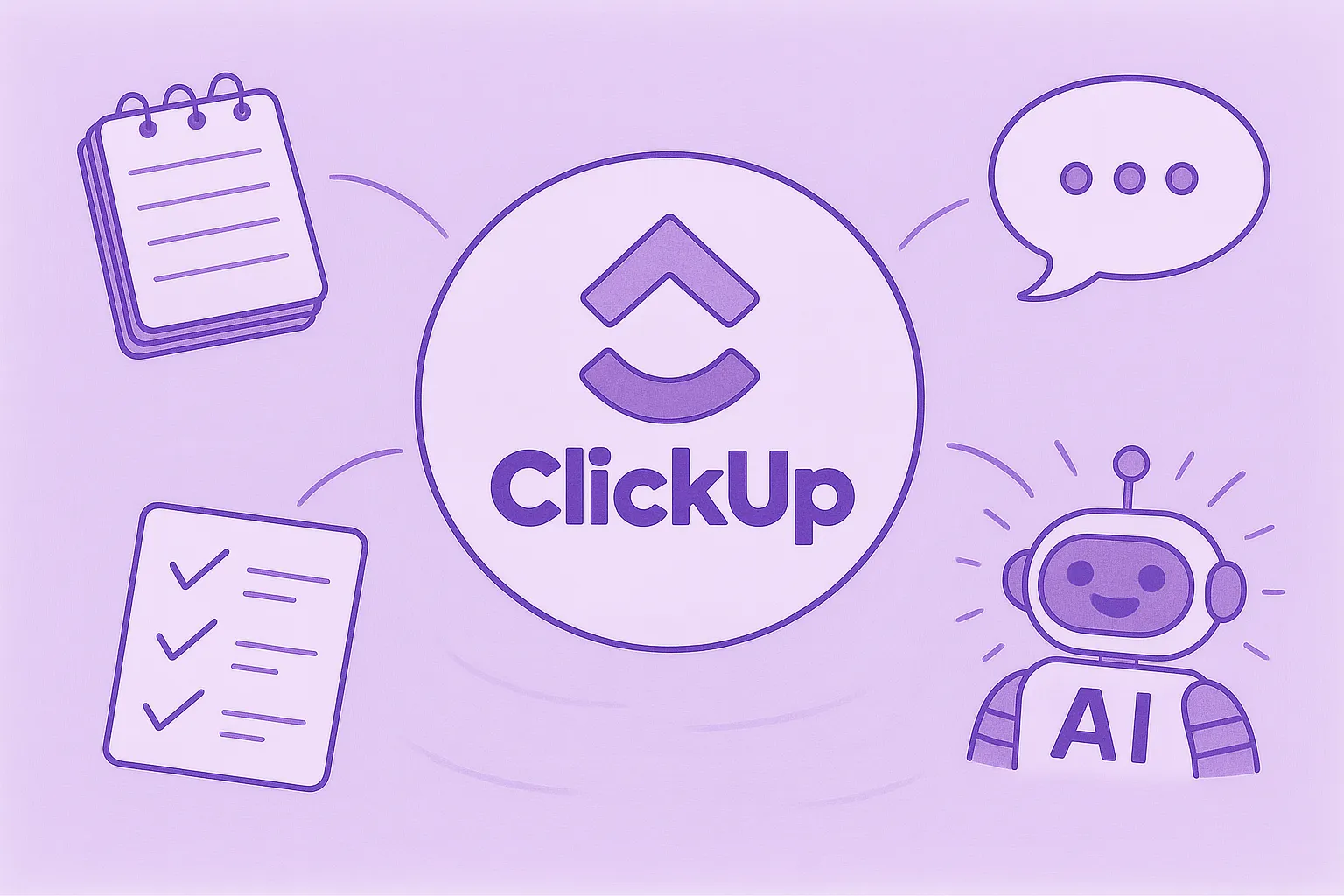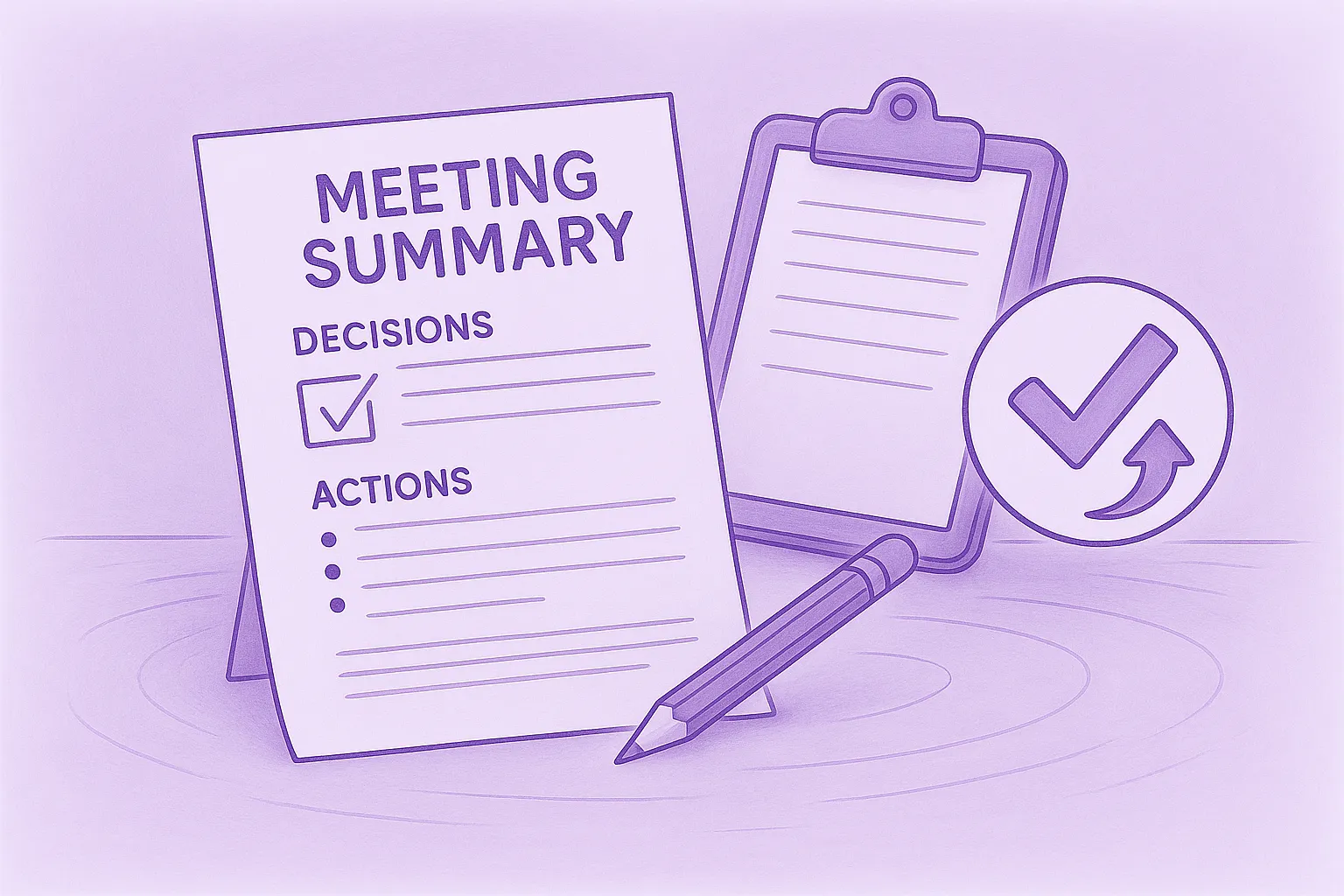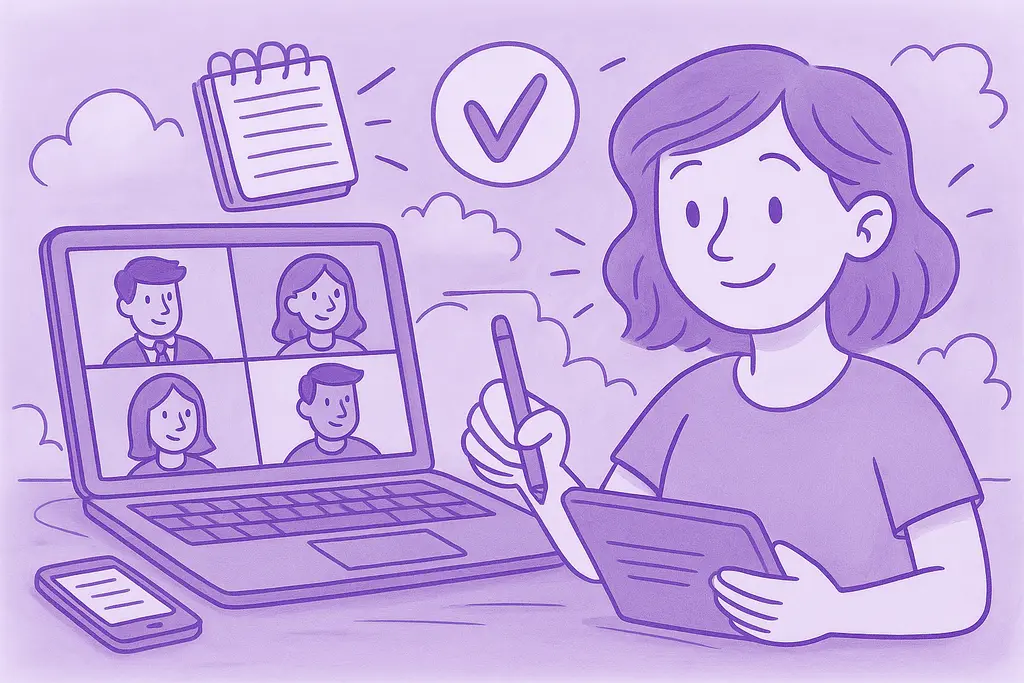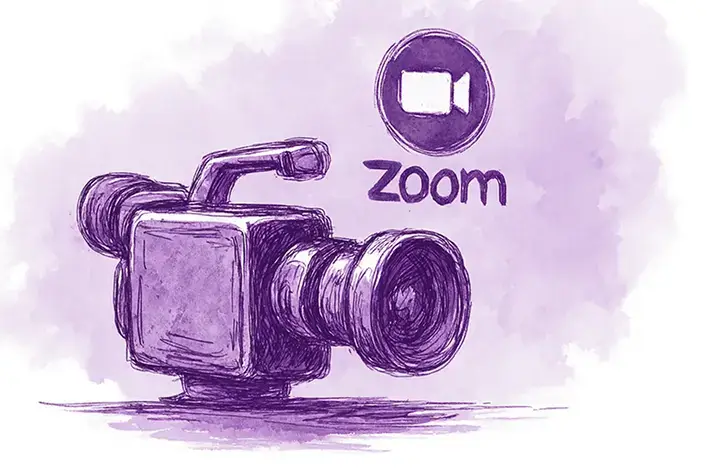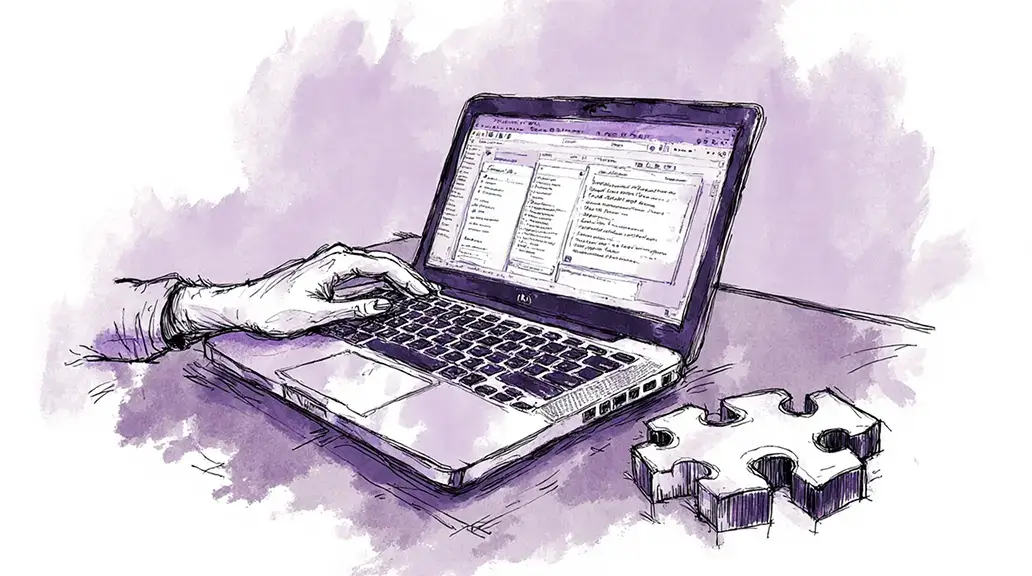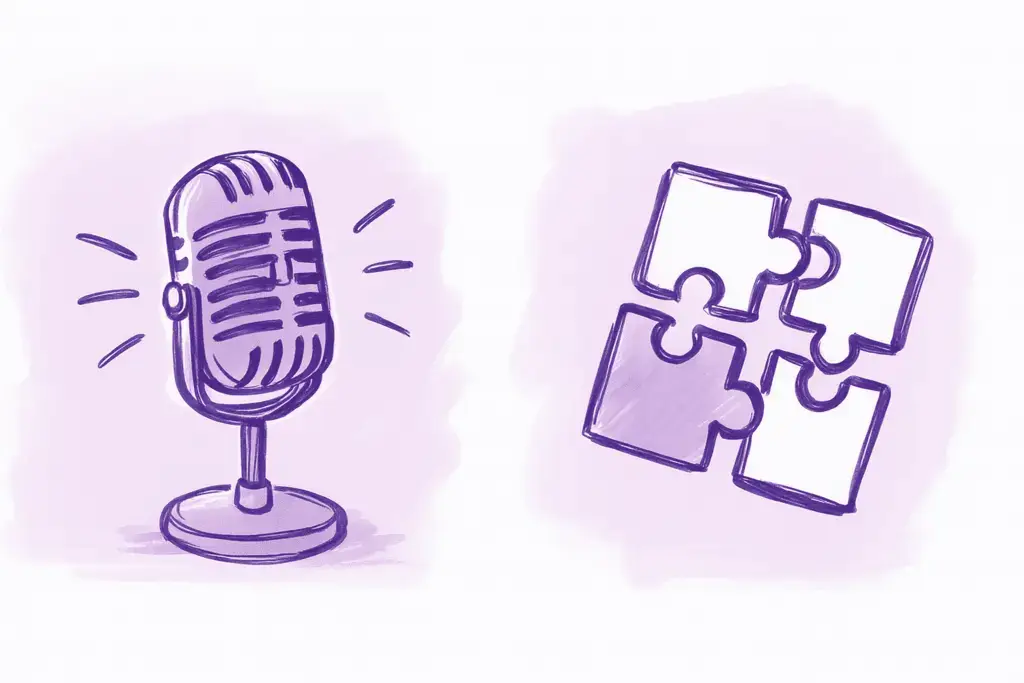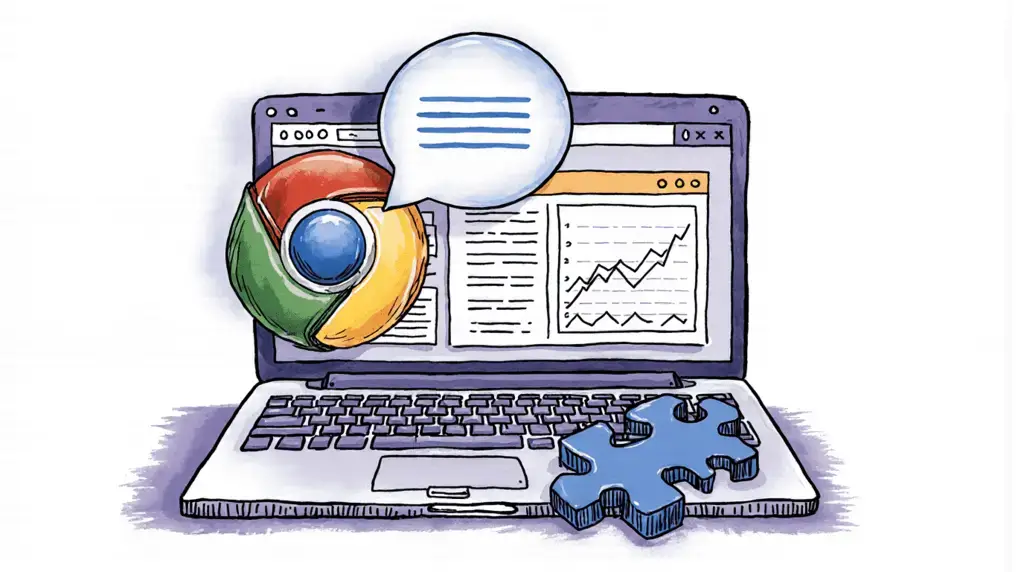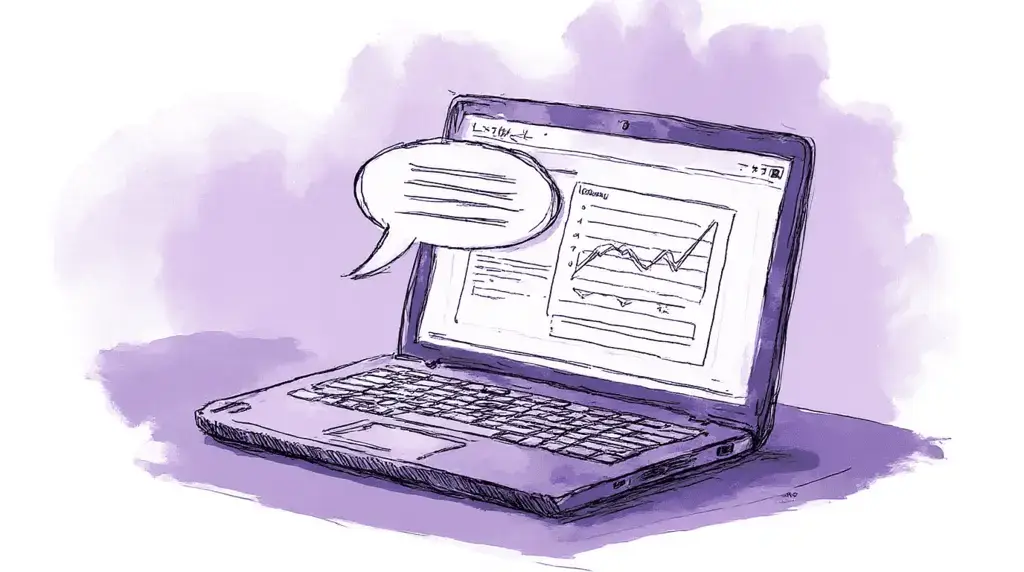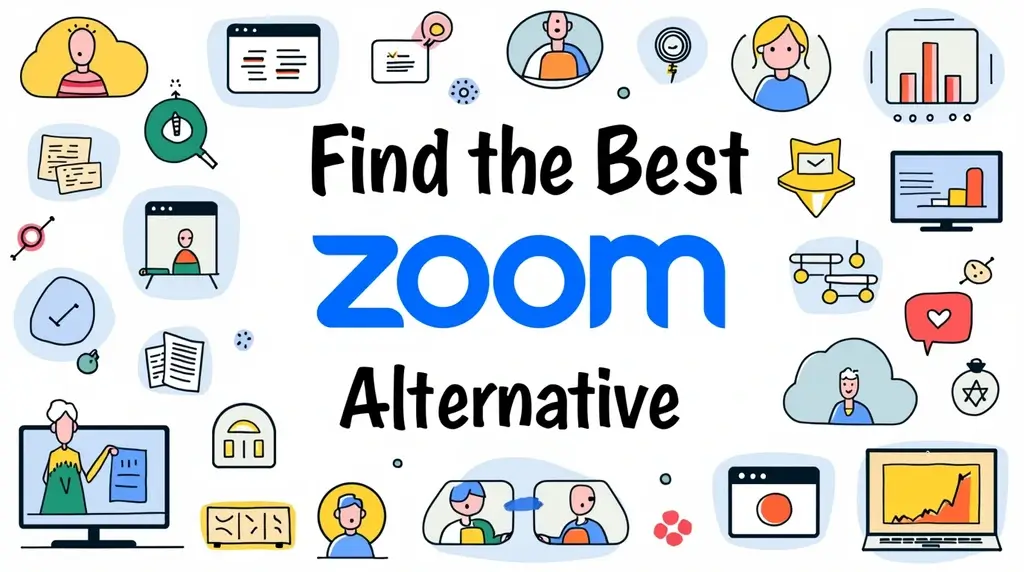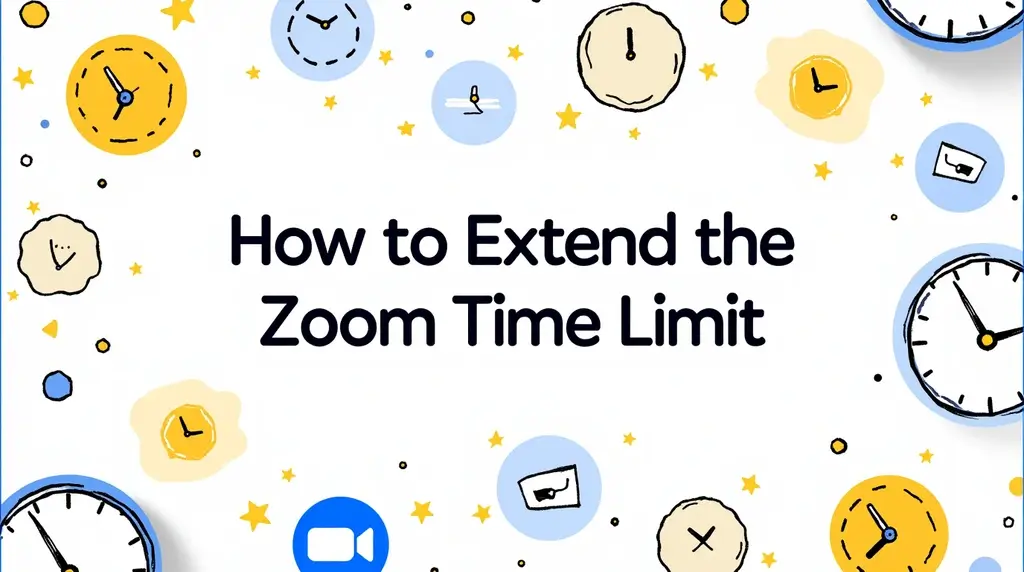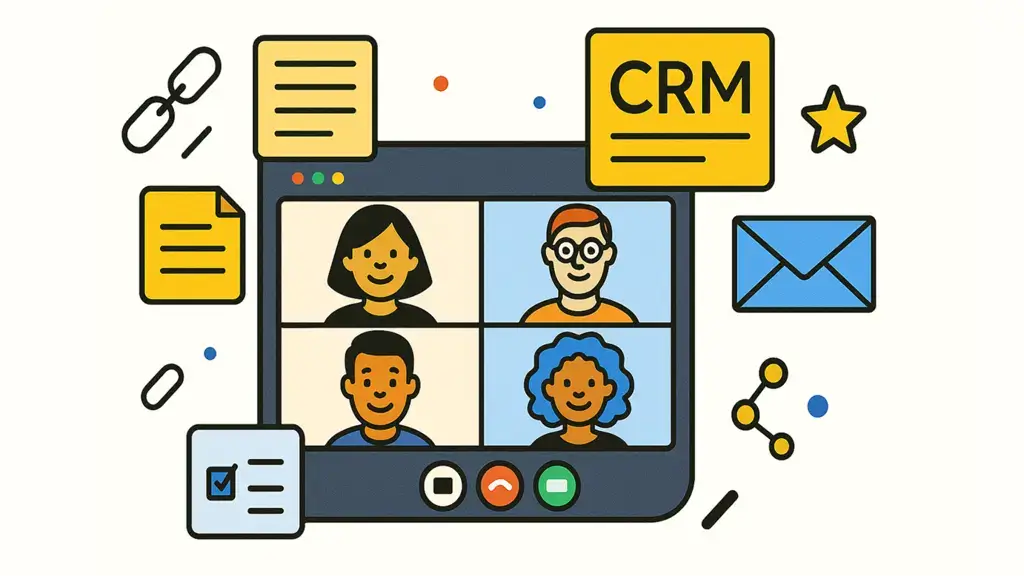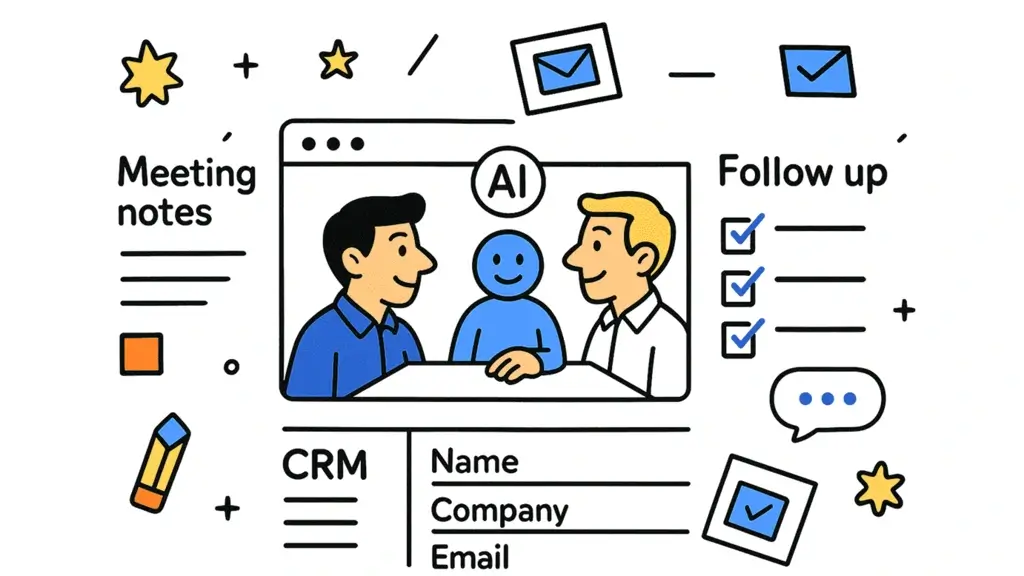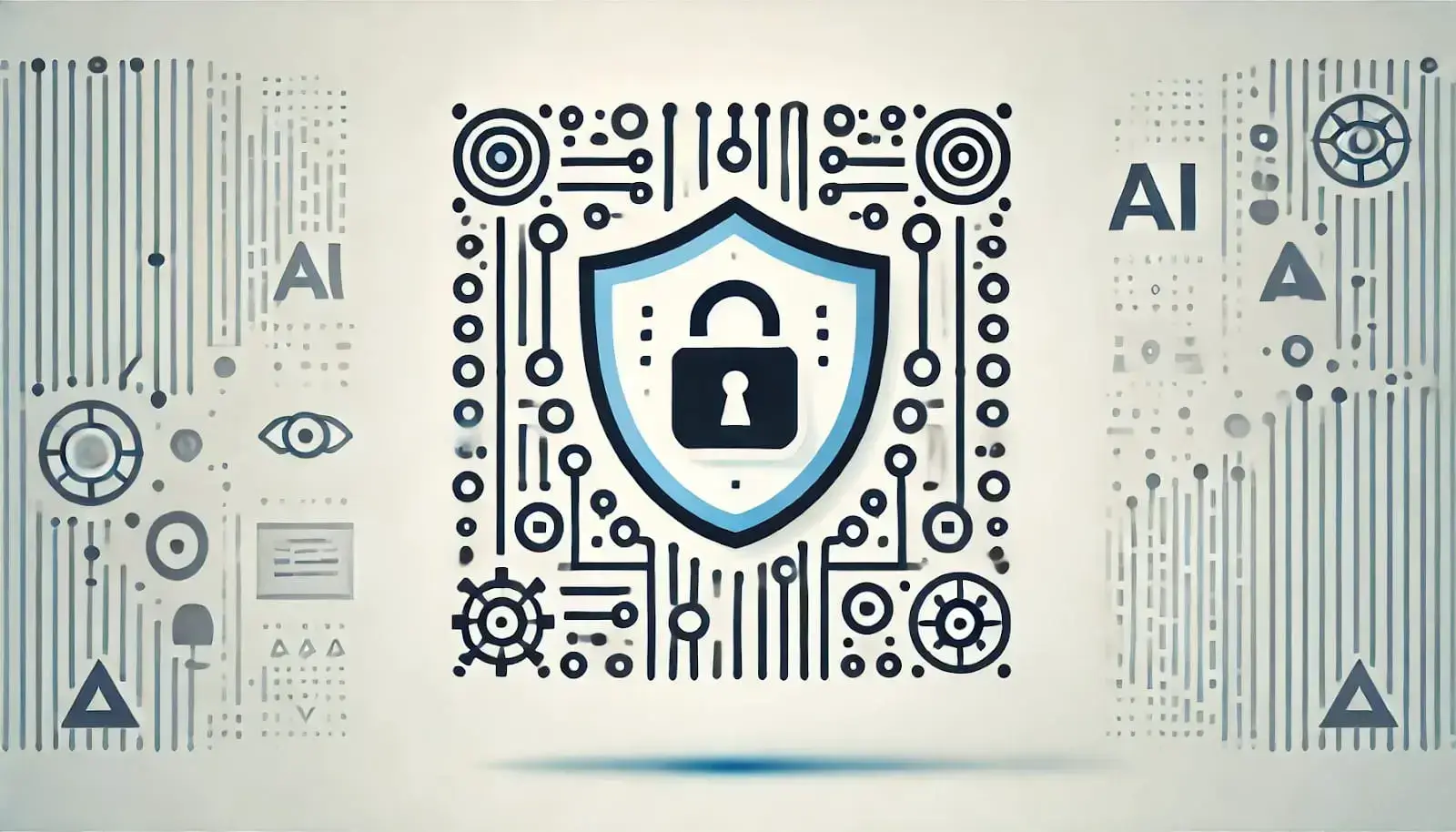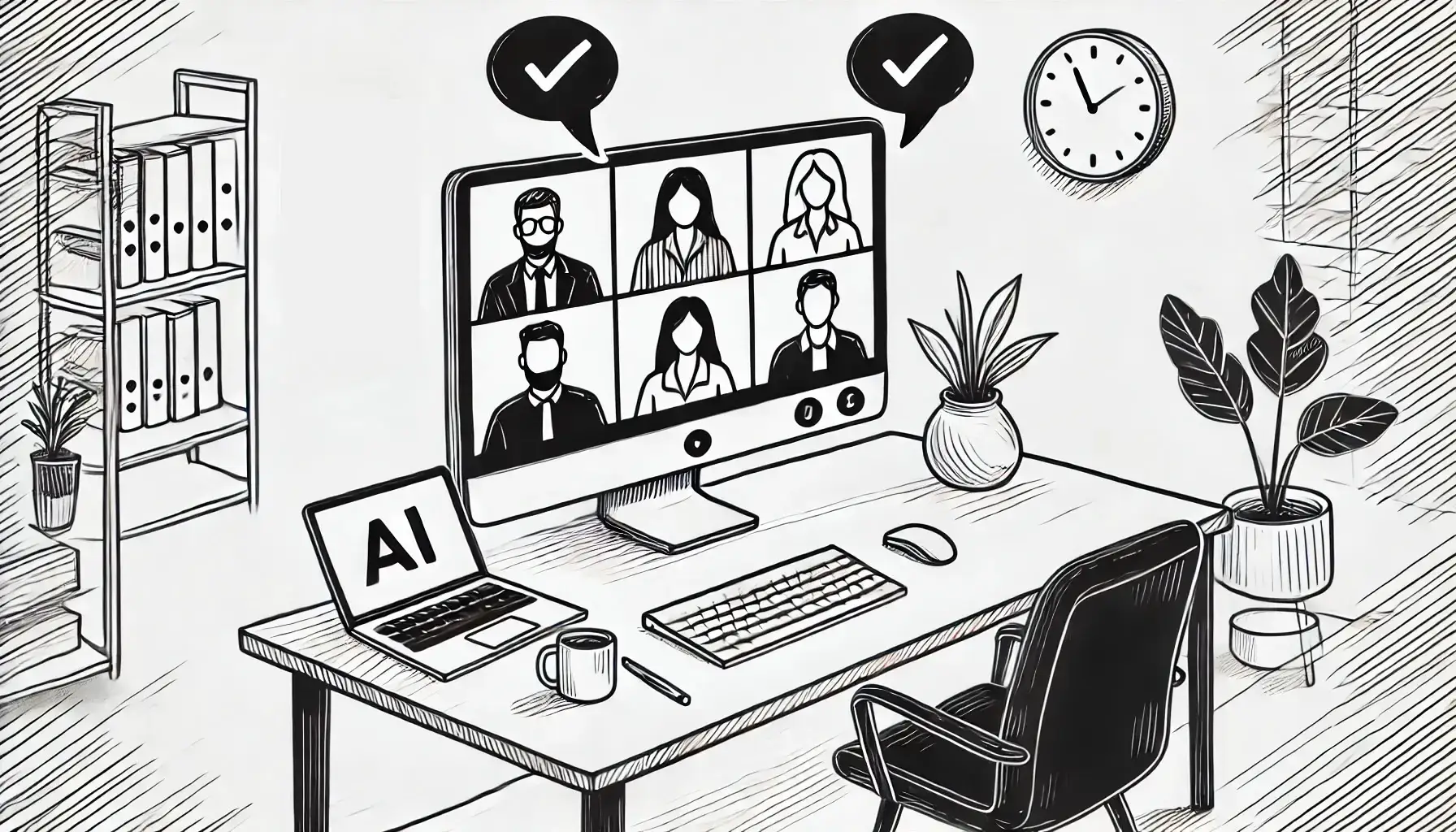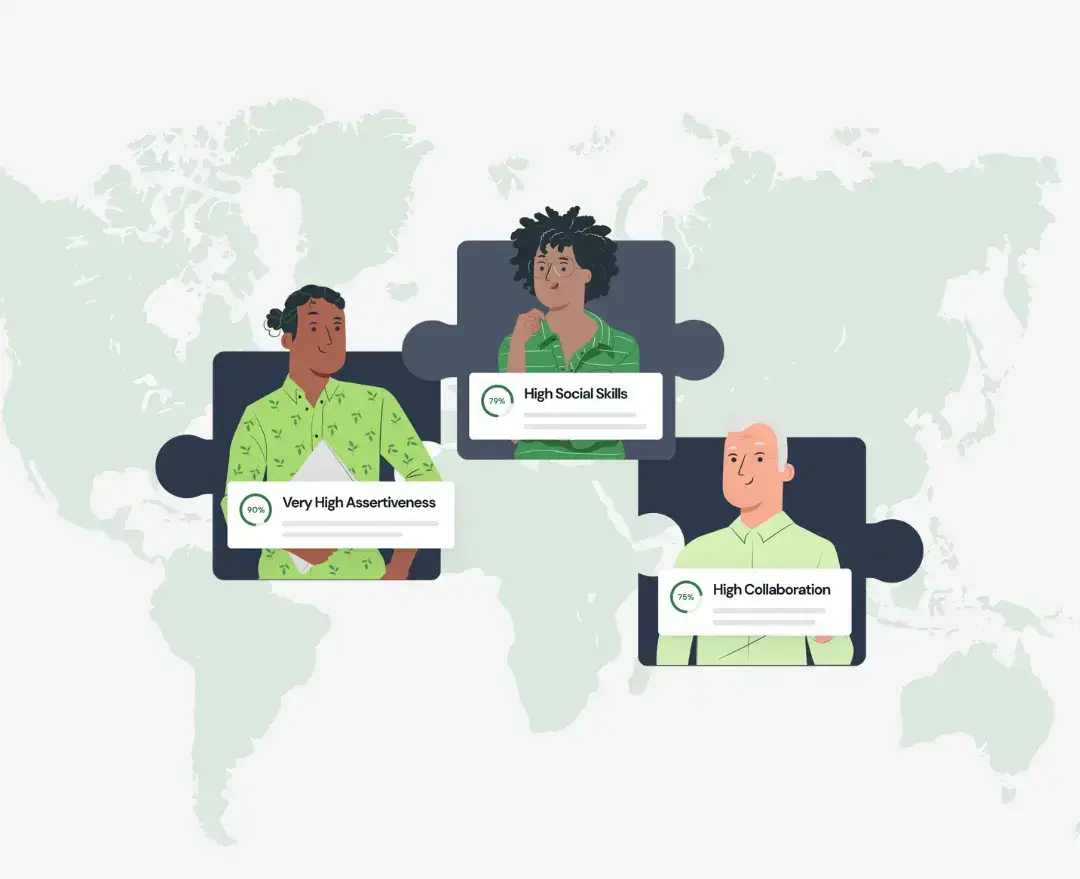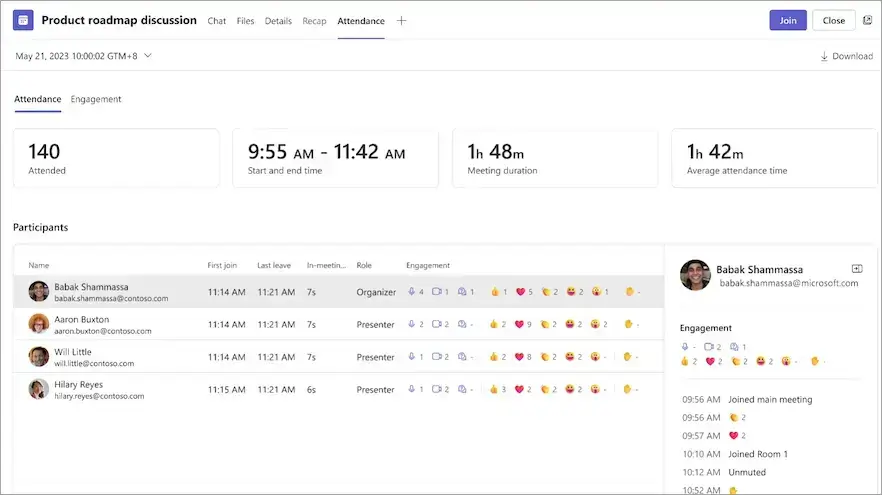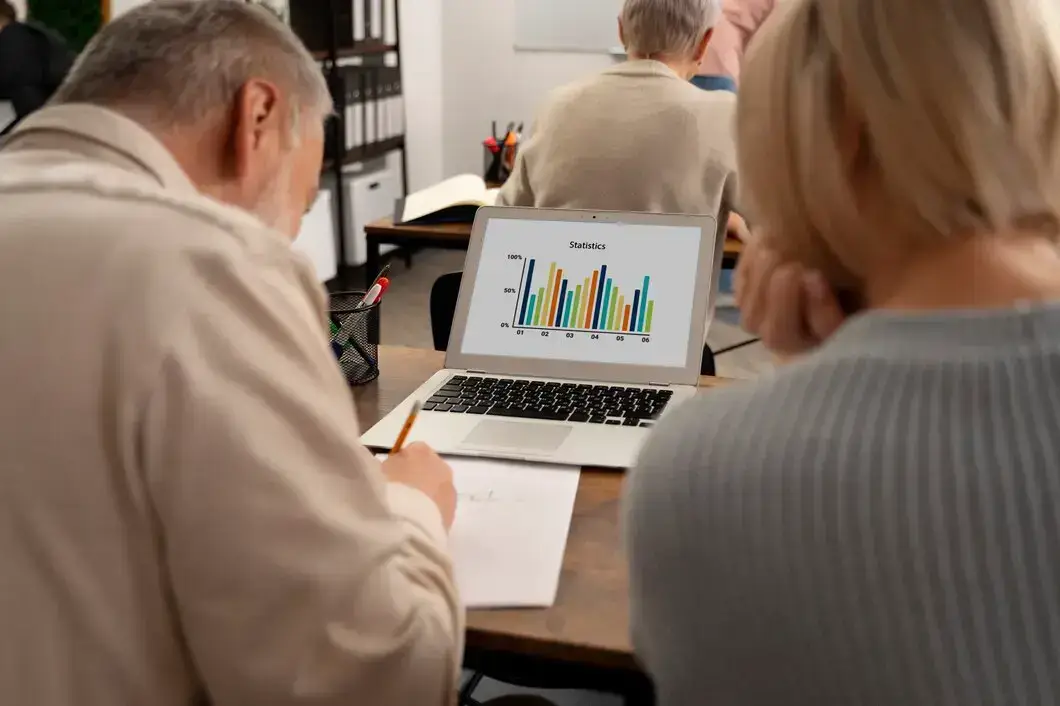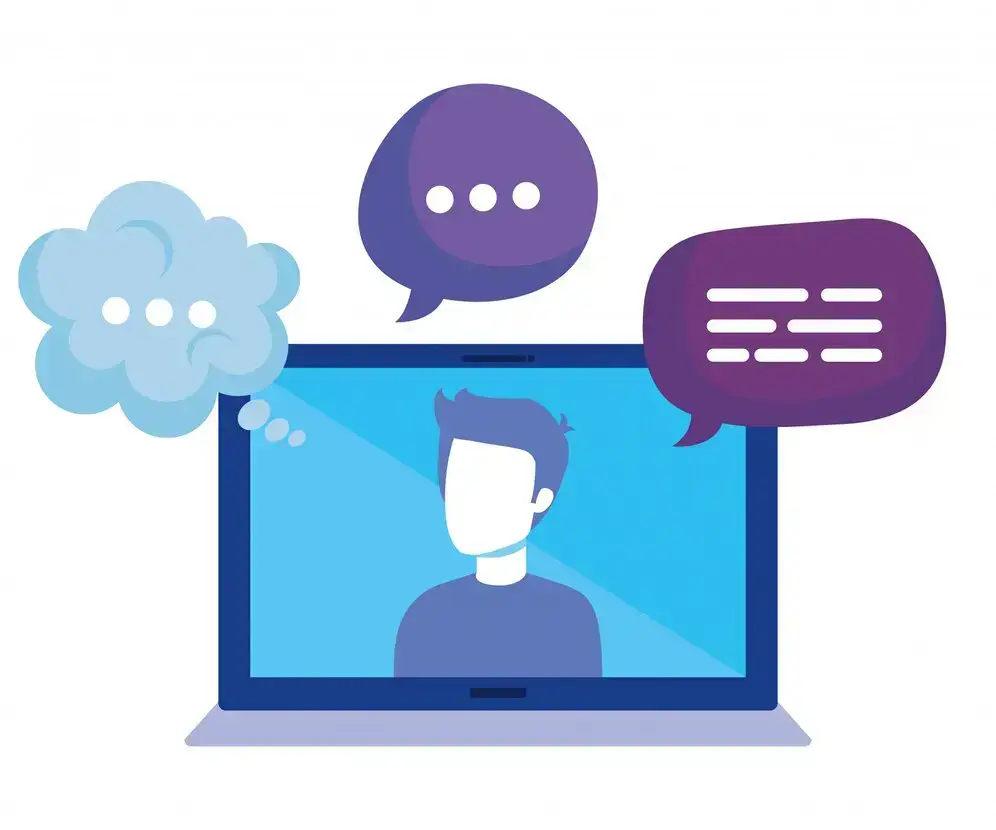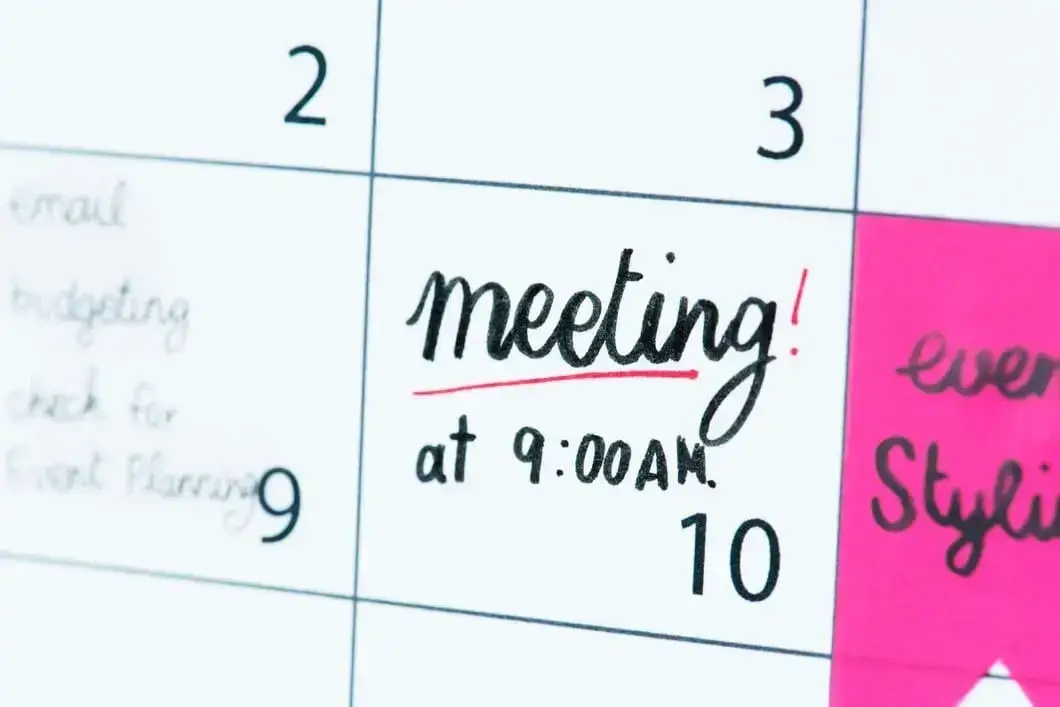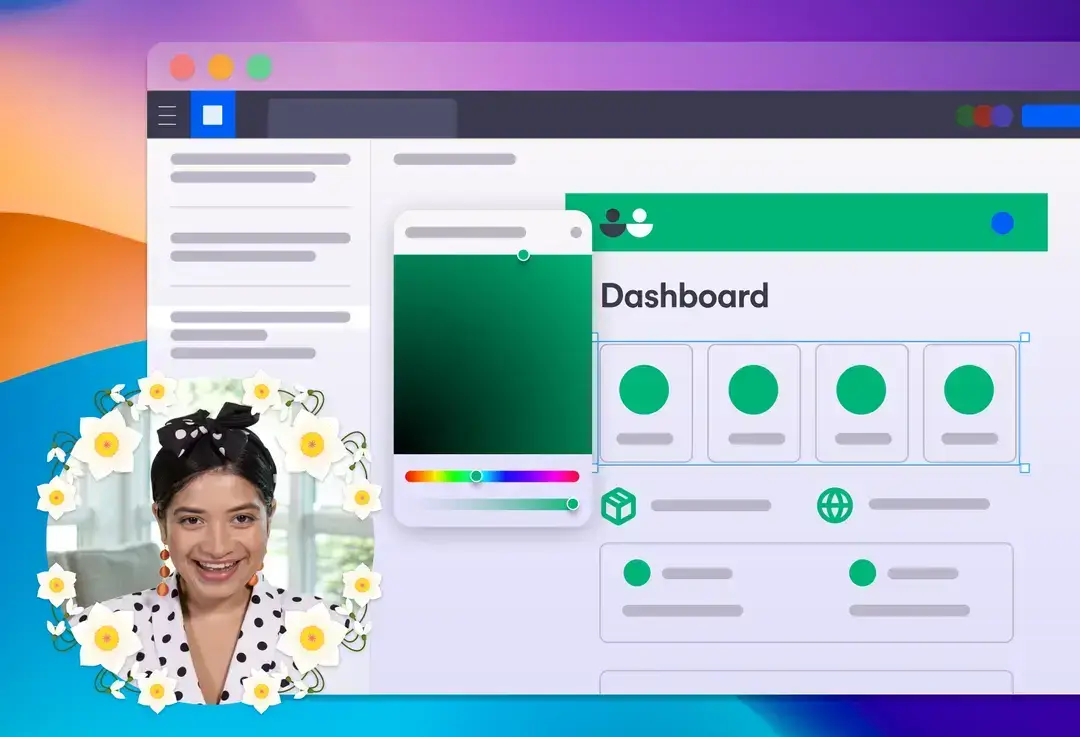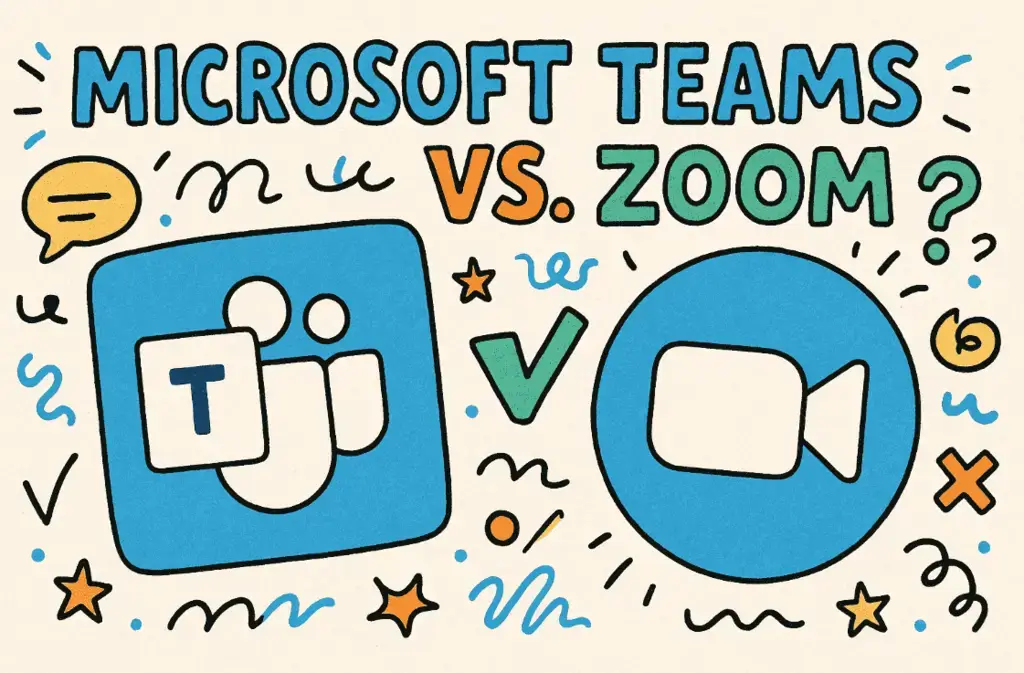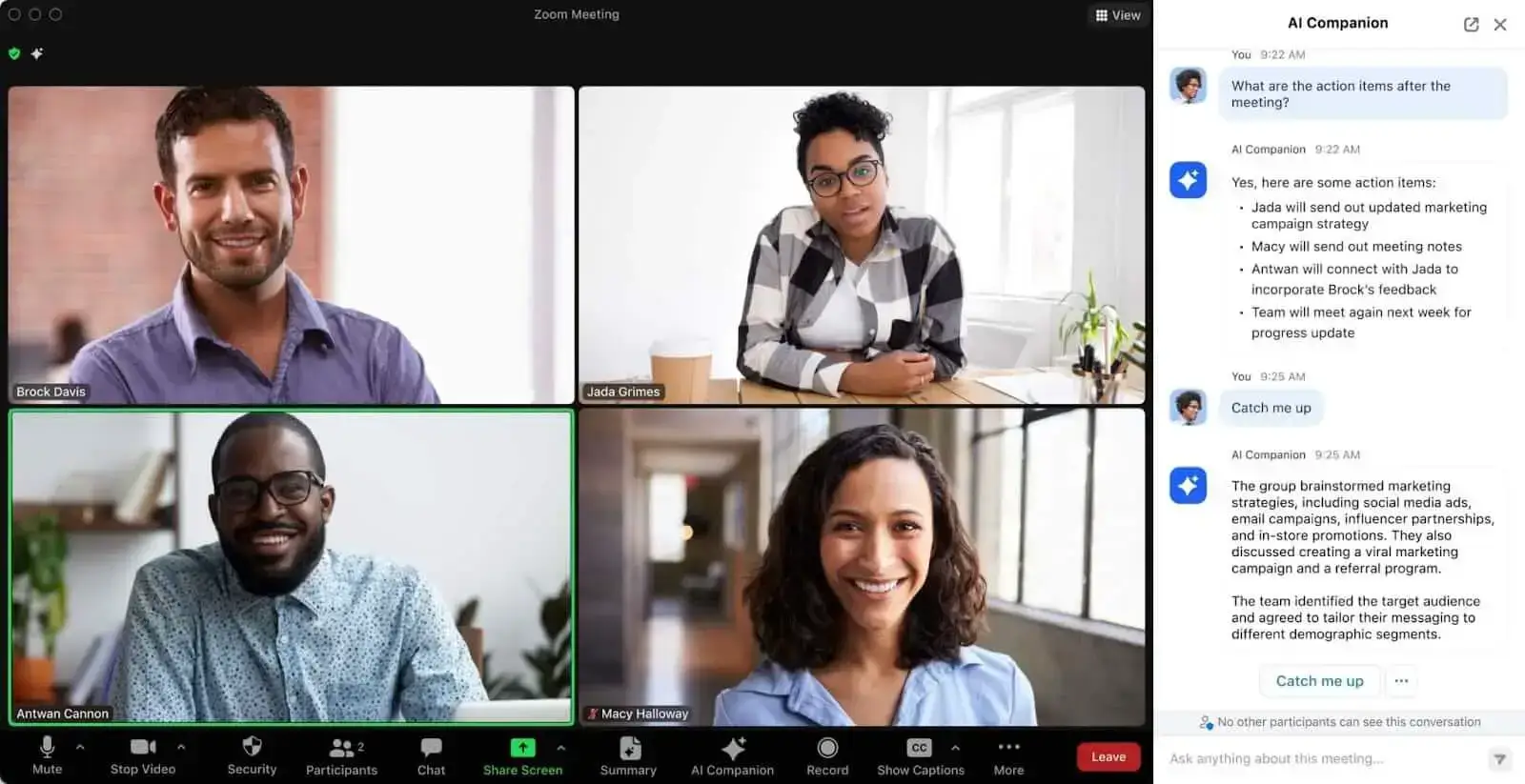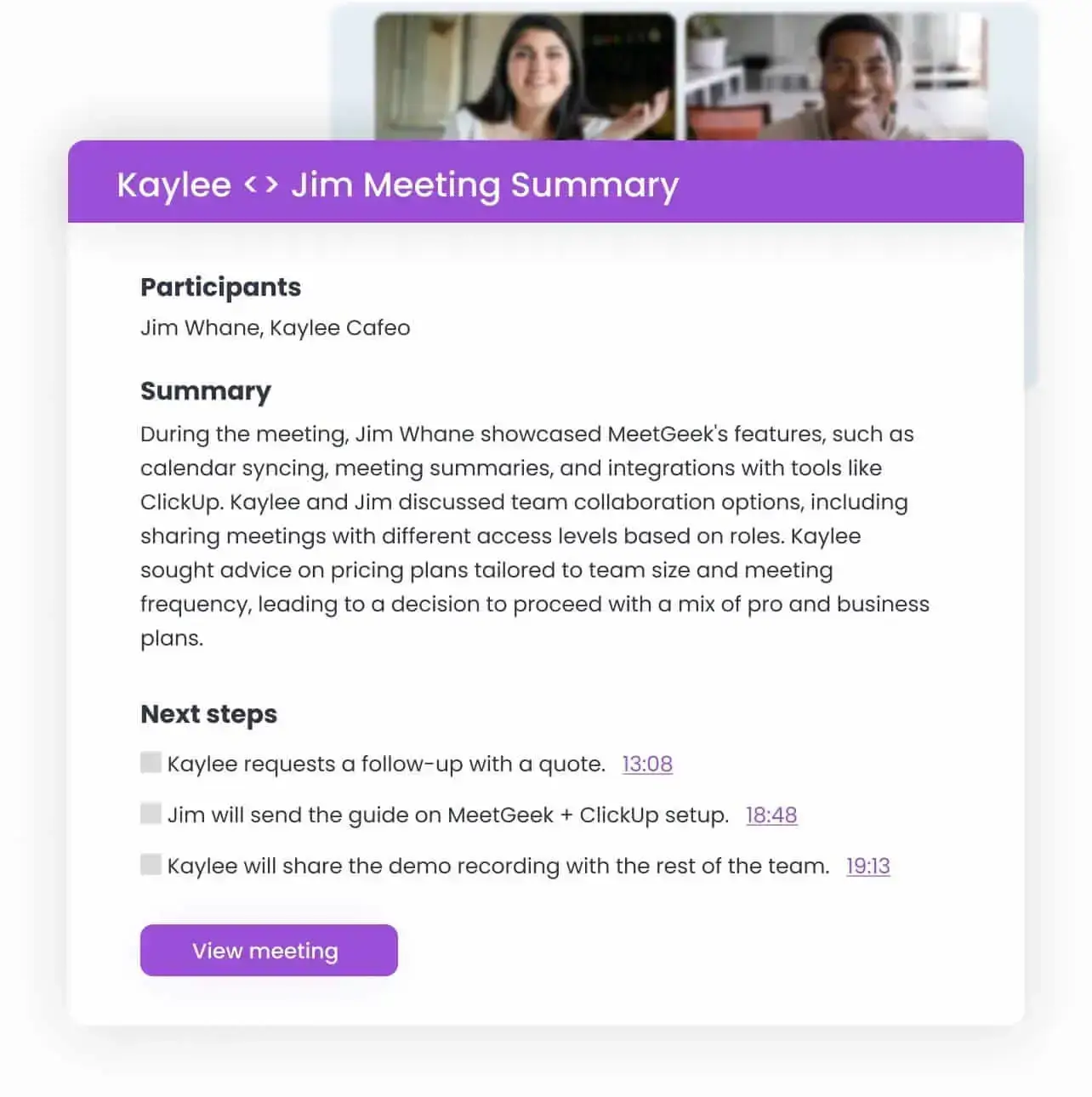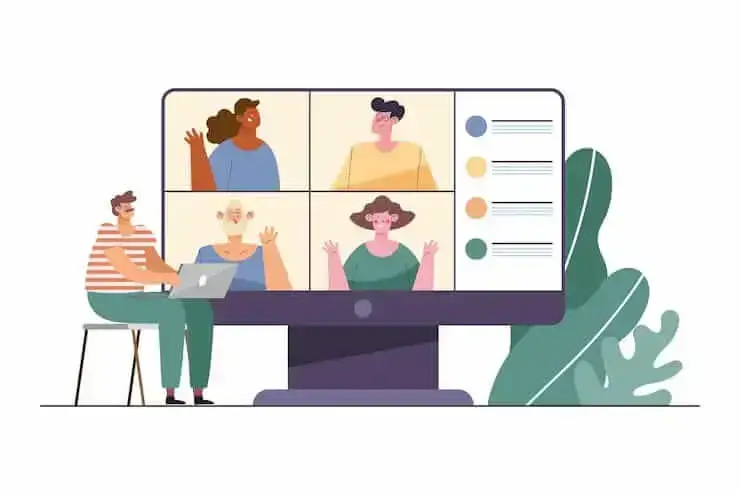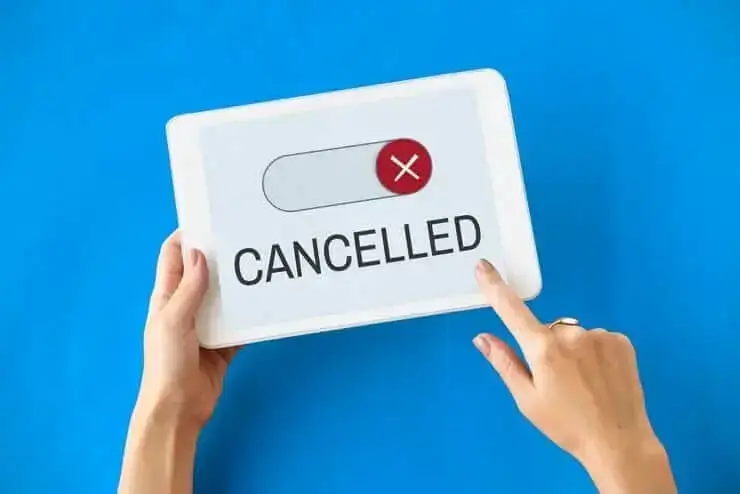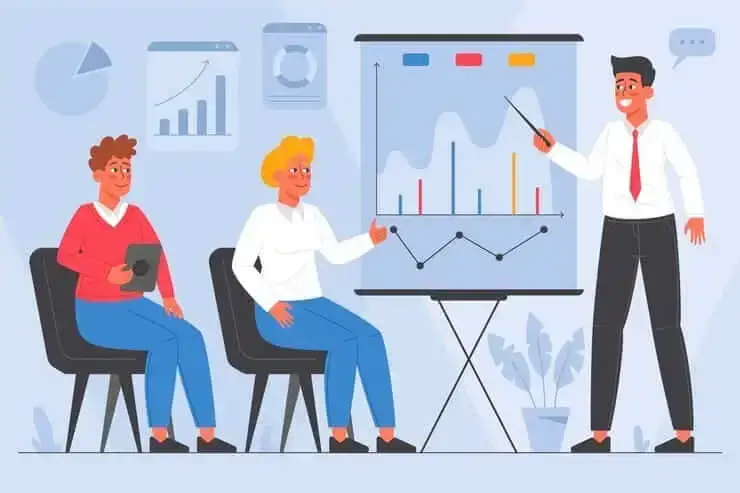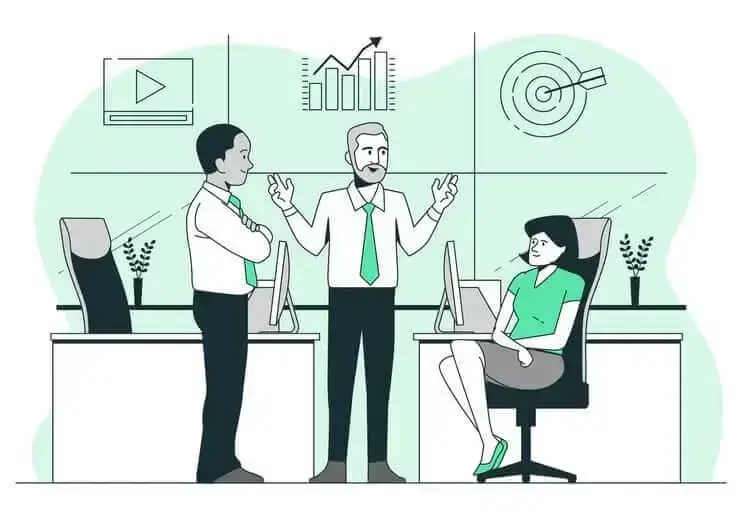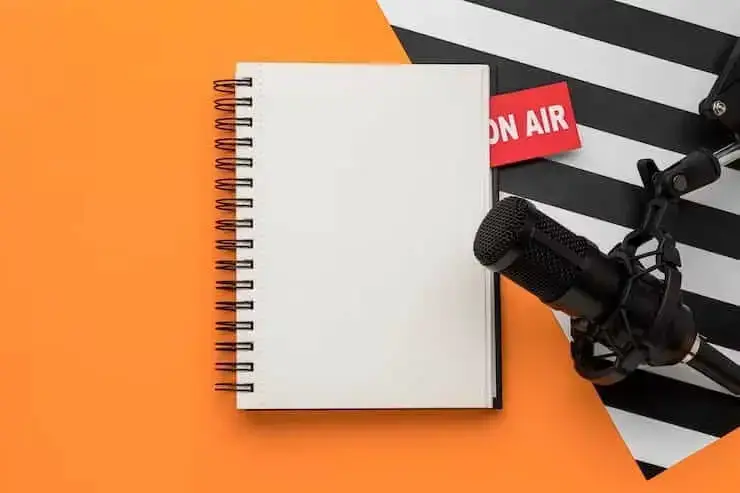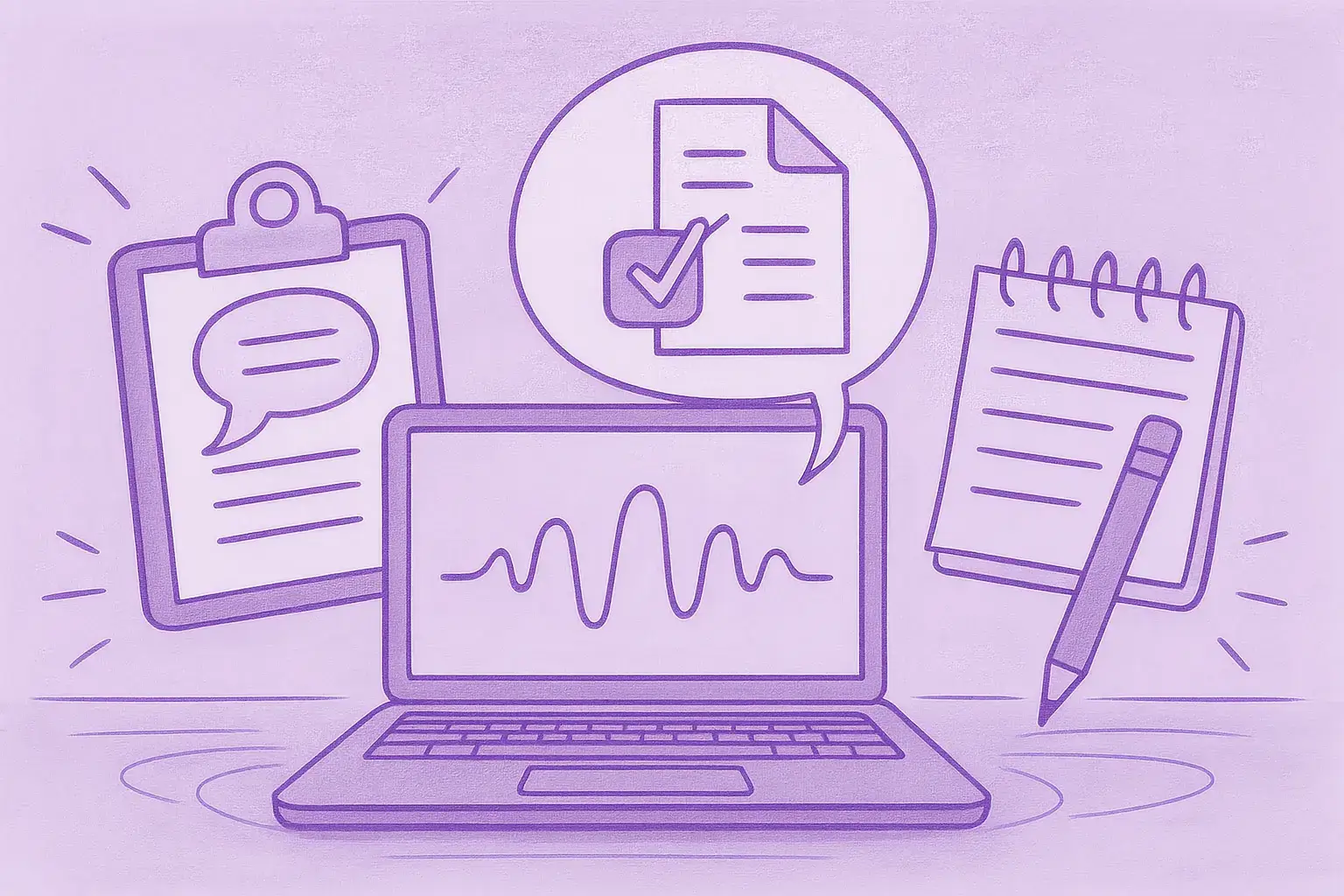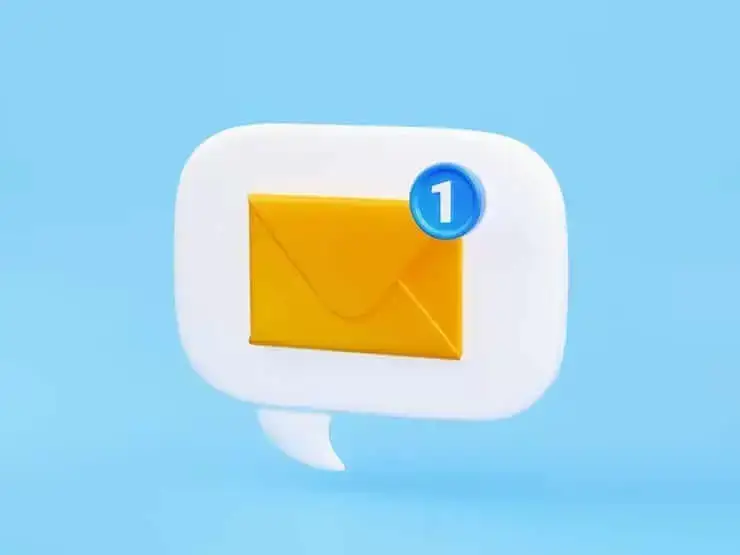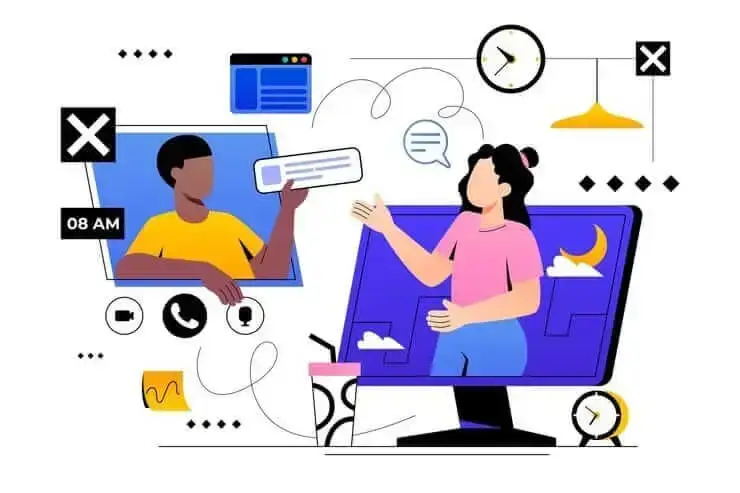Where Do Zoom Recordings Go? 3 Places You Should Check
Find out where your Zoom recordings are stored with this easy guide. Learn how to locate, access, and manage your recorded meetings in just a few simple steps.
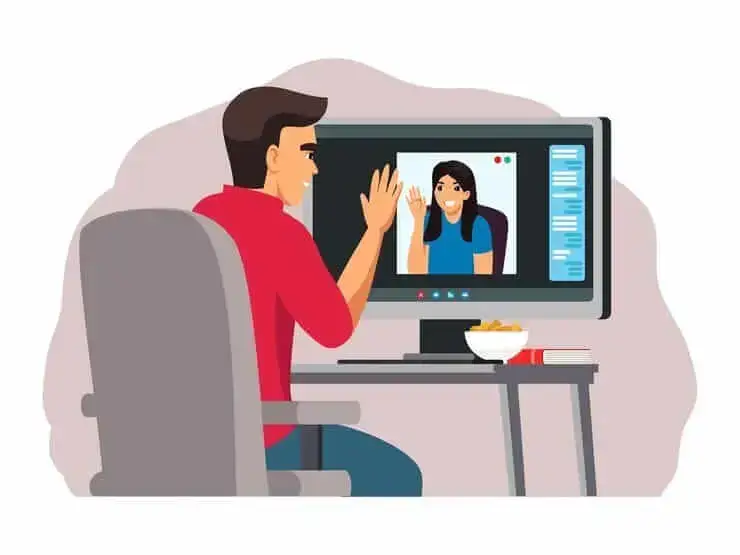
✅ Free meeting recording & transcription
💬 Automated sharing of insights to other tools.

Image source: studio4rt on Freepik
Ever finished a Zoom meeting and wondered, “Where did my Zoom recording go?” Whether you're new to this platform or just need a quick refresher, this quick article will guide you to your Zoom recordings and teach how you can easily access them.
Additionally, we’ll teach you how to change the location of your Zoom recordings, so you never have to waste time looking for them all over the place.
💡 Looking for an easier way to manage your meeting recordings and keep track of important discussions? With MeetGeek, you can automate recording, transcription, and organization, ensuring your meeting insights are always at your fingertips—try it for free.
Whether you’re documenting meetings for work, study, or your personal archive, knowing where to find Zoom recordings at any given point is essential. Let's dive in and make sure you never lose track of your meetings again!
Where to find Zoom recordings
Finding Zoom recordings is easy once you know where to look, whether you’ve saved them on your computer or in the Cloud.
Here’s where you can access Zoom recordings:
- Local storage: Check the default folder on your computer where Zoom saves recordings.
- Zoom Cloud Storage: Log in to your Zoom account and navigate to the "Recordings" section
- Zoom App: Access recordings directly through their desktop app.
It's important to know that by default, your recordings are saved in the Zoom folder on your computer. If you're on a free Zoom plan, all your recordings will be saved locally on your computer. With a paid Zoom plan, you can choose whether to change the default zoom recording location from local to cloud storage.
Let’s walk through all the ways you can find your Zoom recordings and how to change the default save location to match your preferences.
Where to find Zoom recordings on Mac?
The recordings that are saved directly to your computer’s hard drive (no matter if you’re using Mac, Windows, or Linux,), also known as local Zoom recordings, are available to all users.
Here is where you find Zoom recordings on a computer:
- Open the file management tool on your computer. For Windows, this is File Explorer, and for Mac, it’s Finder.
- Access the Documents folder on your computer, since this is where Zoom typically saves recordings.
- Look for a folder labeled “Zoom.” When you open it, you’ll see all your recorded meetings.

- The Zoom folder contains subfolders organized by meeting date. Each subfolder holds the file path and the recording files for a specific meeting, including the video, audio, and chat files.

NOTE: If you’ve chosen a different location to save your Zoom recordings, you’ll need to access that folder instead to play, share, or move your recordings as needed.
How to access Zoom cloud recordings?
If you have a paid Zoom account, you can save your recordings to the Cloud, so you can access your meeting data anywhere, anytime.
Here is where to find Zoom recordings in the Zoom Cloud:
- Go to Zoom.us and log in to your account.
- In the menu on the left-hand side, click on “Recordings & Transcripts.”
- In the “Cloud Recordings” section, you’ll see a list of your recorded meetings, organized by date. Each recording entry includes details like the meeting topic, date, and duration, making it easy to find the one you need. You can filter them using the meeting ID, title, date range, and more.
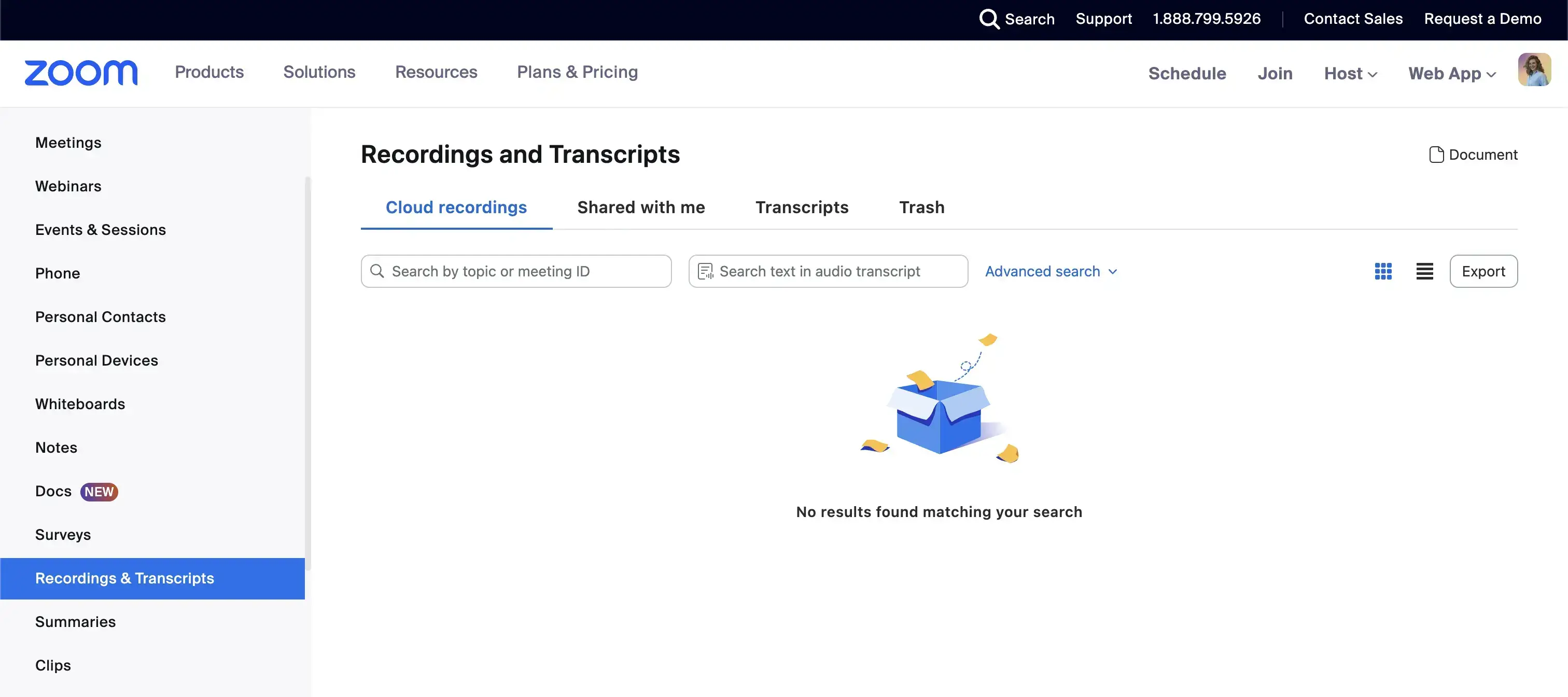
Where to Find Your Recordings via the Zoom App
Accessing your Zoom recordings directly through the app is simple and convenient, especially if you’re trying to access your meetings from the comfort of your desk.
Here’s where to find meeting recordings on the Zoom Web app:
- Launch the Zoom app on your desktop and make sure you’re logged in to your account.
- On the home page, click on “Open recordings”.

- Here, you’ll find two tabs: “Cloud recordings" and "Local recordings" tabs and can find all your Zoom recordings.
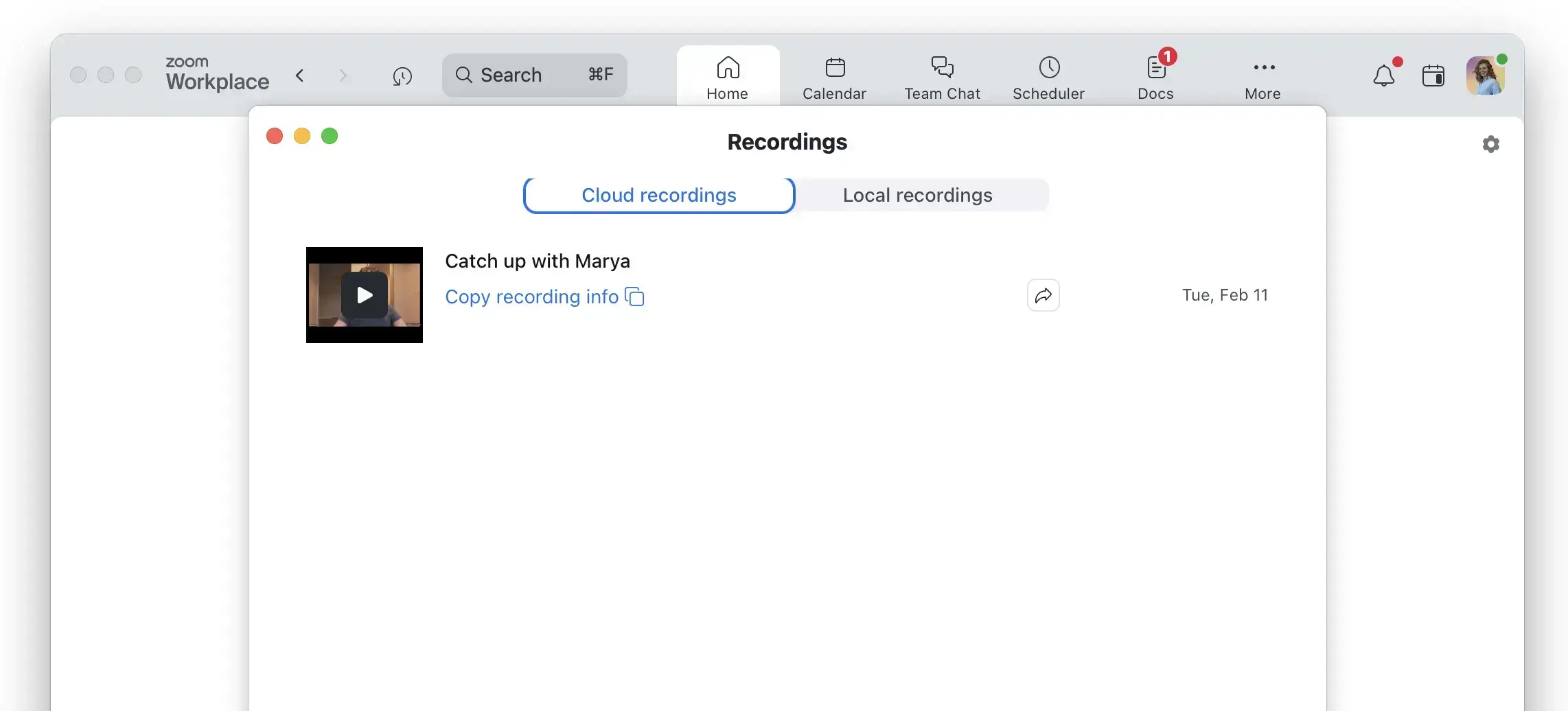
Zoom meeting recordings are a valuable resource for reviewing content, sharing information, and keeping records. Here’s how you can make the most of your Zoom recordings by playing, sharing, and downloading them.
How to play Zoom meeting recordings
Do you need to replay your recorded Zoom meetings?
Here is how to play back Zoom recordings:
- Local recording: To play a local recording, navigate to the folder where it’s saved on your computer and double-click the file. It will open in your default media player.
- Cloud recording: For Cloud recordings, log into your Zoom account, go to the “Recordings” section, and click “Play” next to the meeting you want to watch.
How to share Zoom meeting recordings
Sharing your Zoom recordings allows others to access meeting content, which is especially useful for larger teams who work with clients.
Here’s how to share Zoom meeting recordings:
- Local Zoom Recording: If your recording is saved locally, you can share it by uploading the file to a Cloud service like Google Drive or Dropbox and then sharing the link. Alternatively, you can email the file directly if it’s small enough.
- Cloud Zoom Recording: For Cloud recordings, Zoom provides a direct link that you can share with others. Go to the “Recordings” section in your Zoom account, click “Share” next to the recording, and copy the link. You can also set permissions for who can view the recording.
How to download Zoom meeting recordings
Downloading your Zoom recordings ensures you have a backup or can move them to other places of storage.
Here’s how to download Zoom recordings:
- Local Recording: If your recording is saved locally, it’s already on your computer, so you can move or copy it to another location as needed.
- Cloud Recording: To download a recording from the Zoom Cloud, log in to your Zoom account, access the “Recordings” section, and select “Download” next to the meeting you want to save. The recording will be automatically saved to your computer.
How to Change Zoom Recording Storage Location
If you use any paid Zoom plan, you can customize your Zoom recording settings and ensure that your recordings are saved exactly how you want them.
Here’s how to change Zoom recording settings:
- Launch the Zoom desktop app and log in with your credentials.
- In the top-right corner of the screen, click on your profile picture and select “Settings” from the dropdown menu. This will open the settings window.
- In the settings window, click on “Recording” from the list on the left. This will bring up all the options related to recording your meetings.
- Under the “Recording” tab, you’ll see an option to choose where your local recordings are saved. You can either stick with the default destination or click “Change” to select a new folder on your computer.

- Zoom offers several additional options you can enable or disable based on your needs:
- Record a separate audio file for each participant: This is useful if you want to isolate audio tracks.
- Optimize for 3rd party video editor: Choose this if you plan to edit the video later.
- Add a timestamp: This adds the meeting host’s date and time to the video recording.
- Record video during screen sharing: Decide whether to include video of the presenter while screen sharing.
- If you have a Zoom account with Cloud recording capabilities, you can enable Cloud recording and customize settings like recording audio transcripts, optimizing recordings for shared screens, and choosing whether to record participants’ video.
- After selecting the options that best fit your needs, close the settings window. Your changes will be saved automatically.
How to Automate Zoom Meeting Recordings with MeetGeek
Recording Zoom meetings can be challenging, especially if you don’t have the right subscription plan and permissions. On top of that, manually storing, labelling, and sharing them can easily result in chaos, especially if you’re dealing with large volumes of meetings.
Luckily, there’s a free way to automate the entire process, and it’s called MeetGeek. This Zoom AI Notetaker automatically joins, records, transcribes, summarizes, and stores your meetings in a centralized dashboard, so all your Zoom data is right at your fingertips.
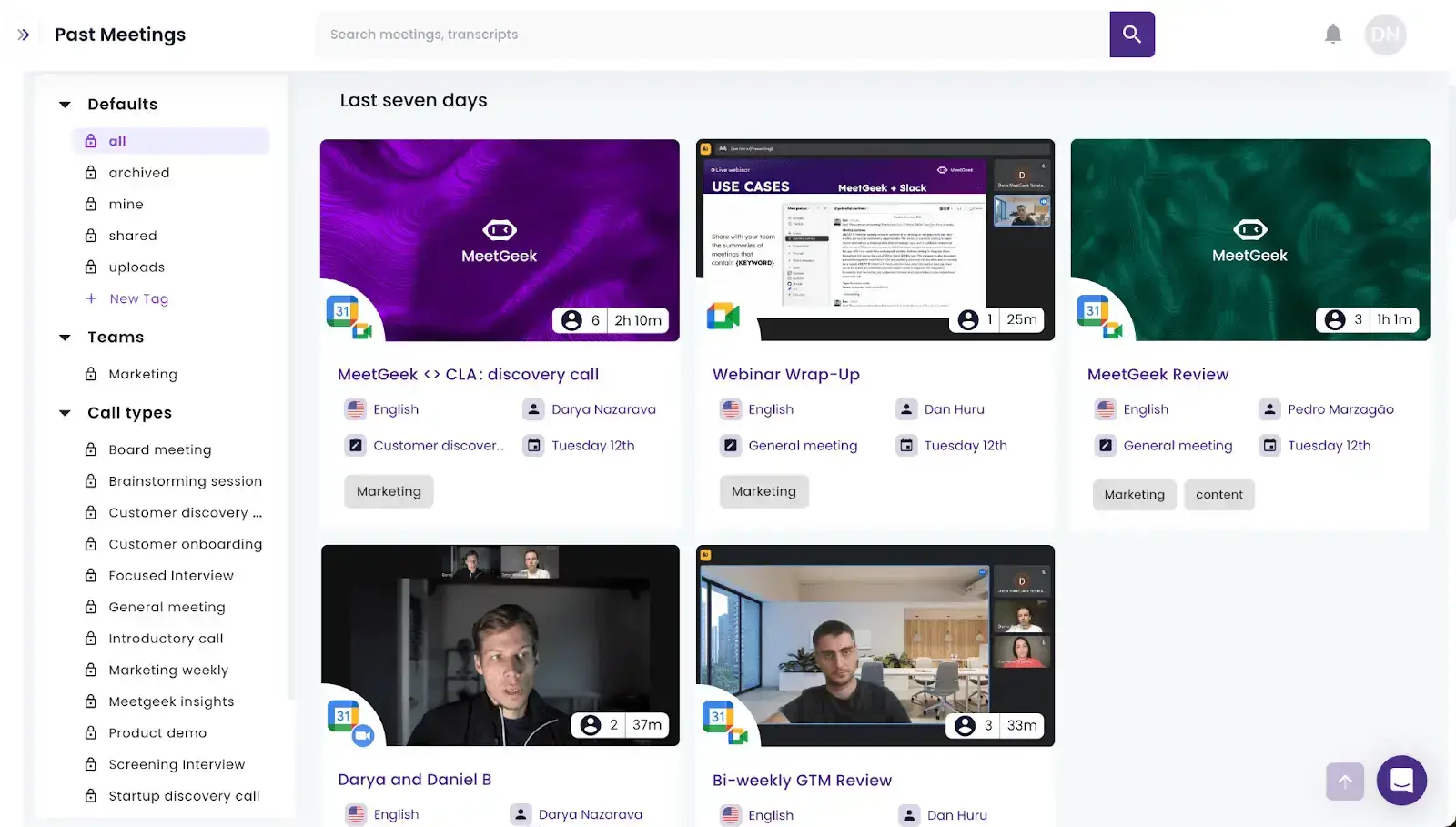
If you already record your meetings with Zoom’s Cloud recording feature, you can automatically sync them directly with MeetGeek through Zapier. Learn how to easily set up the automation, here.
Here’s everything MeetGeek can do for your Zoom meetings:
- Join Zoom meetings for you: MeetGeek can join and record Zoom meetings when you’re unavailable, automatically documenting and transcribing everything so you can review the conversation later.
- Extract key points and action items: With AI-driven insights, MeetGeek highlights the most important parts of the meeting, including key points and action items, making it easy to focus on what matters most.
- Shareable meeting summaries: The platform generates clear and concise meeting summaries, allowing team members to quickly get up to speed without having to watch the full recording.
- Integration with collaboration tools: MeetGeek integrates seamlessly with tools like Slack, Notion, etc., making it simple to share meeting summaries and recordings directly in your workspace.
- Searchable transcripts: The searchable transcript feature lets you quickly find specific topics or discussions without needing to go through the entire meeting recording.
- Centralized meeting library: MeetGeek saves all your meeting recordings and transcripts in a searchable repository, so you and your team, if needed, can access them virtually anytime you need them.
- Automated follow-ups: If you need to follow up with colleagues after a meeting, let MeetGeek automatically generate follow-up emails that cover all the essentials.
- Mobile App Access: On the go? MeetGeek’s mobile app allows you to catch up on meetings from anywhere, always keeping you in the loop.
Zoom Meeting Recording FAQ
1. Why Is My Zoom Recording Not Showing Up?
If your Zoom recording isn’t appearing, there are a few things you can check:
- Ensure that you pressed the recording button during the meeting. If the record button wasn’t clicked during an active Zoom meeting, no recording will be available.
- If you did record the session, but it’s not showing up, verify that the recording has fully processed. Cloud recordings, especially for longer meetings, can take some time to show up in your account.
- For local recordings, check the default save location on your computer, usually found in the documents folder under a Zoom subfolder. If you still don’t see it, try restarting Zoom or your computer to refresh the application.
2. Do Zoom Recordings Go Away?
Zoom recordings don’t disappear on their own, but it’s important to keep track of storage limits, especially with Cloud recordings.
If you’re using Zoom’s Cloud storage, your recordings are kept until you reach your storage capacity. To avoid losing any recordings, you can download them to your computer or upgrade your Cloud storage.
Local recordings, on the other hand, remain on your computer until you choose to delete them.
3. What Is the Difference Between Cloud Recordings and Local Recordings in Zoom?
The key difference between Cloud and local recordings in Zoom is where they’re stored and how you can access them:
- Cloud recordings are stored on Zoom’s servers, allowing you to access them from anywhere through your Zoom account. However, they are only available to paid Zoom users.
- Local recordings are saved directly to your computer’s hard drive. While they’re available without an internet connection, they do require managing your device’s storage space. Local recording is an option available for all users.
Make the Most of Your Zoom Recordings with MeetGeek!
Finding and managing your Zoom recordings doesn’t have to be complicated. Whether you save them locally on your computer or in the Zoom Cloud, knowing where to look and how to access them is key to making the most of your recorded meetings.
Ready to take your Zoom recordings to the next level? With advanced features like automated transcription, searchable archives, and easy sharing options, MeetGeek helps you get even more out of every meeting.
.avif)


